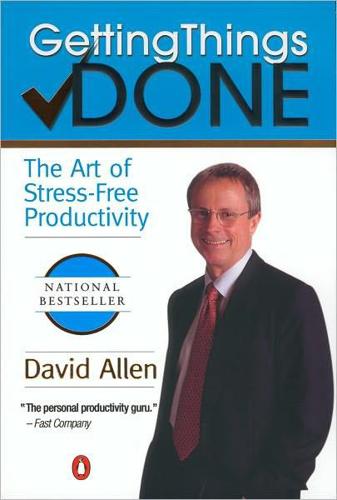
Getting Things Done: The Art of Stress-Free Productivity
by
David Allen
Published 31 Dec 2002
Table of Contents Title Page Copyright Page Dedication Acknowledgements part 1 - The Art of Getting Things Done Chapter 1 - A New Practice for a New Reality Chapter 2 - Getting Control of Your Life: The Five Stages of Mastering Workflow Chapter 3 - Getting Projects Creatively Under Way: The Five Phases of Project Planning part 2 - Practicing Stress-Free Productivity Chapter 4 - Getting Started: Setting Up the Time, Space, and Tools Chapter 5 - Collection: Corralling Your “Stuff” Chapter 6 - Processing: Getting “In” to Empty Chapter 7 - Organizing: Setting Up the Right Buckets Chapter 8 - Reviewing: Keeping Your System Functional Chapter 9 - Doing: Making the Best Action Choices Chapter 10 - Getting Projects Under Control part 3 - The Power of the Key Principles Chapter 11 - The Power of the Collection Habit Chapter 12 - The Power of the Next-Action Decision Chapter 13 - The Power of Outcome Focusing Conclusion Index Praise for Getting Things Done “The Season’s Best Reads for Work-Life Advice . . . my favorite on organizing your life: Getting Things Done . . . offers help building the new mental skills needed in an age of multitasking and overload.” —Sue Shellenbarger, The Wall Street Journal “I recently attended David’s seminar on getting organized, and after seeing him in action I have hope . . . David Allen’s seminar was an eye-opener.” —Stewart Alsop, Fortune “Allen drops down from high-level philosophizing to the fine details of time management.
…
Magee, chaired professor of business and economics, University of Texas at Austin “A true skeptic of most management fixes, I have to say David’s program is a winner!” —Joline Godfrey, CEO, Independent Means, Inc. and author of Our Wildest Dreams “Getting Things Done describes an incredibly practical process that can help busy people regain control of their lives. It can help you be more successful. Even more important, it can help you have a happier life!” —Marshall Goldsmith, coeditor, The Leader of the Future and Coaching for Leadership “WARNING: Reading Getting Things Done can be hazardous to your old habits of procrastination. David Allen’s approach is refreshingly simple and intuitive. He provides the systems, tools, and tips to achieve profound results.”
…
—Stewart Alsop, Fortune “Allen drops down from high-level philosophizing to the fine details of time management. Take a minute to check this one out.” —Mark Henricks, Entrepreneur “David Allen’s productivity principles are rooted in big ideas . . . but they’re also eminently practical.” —Keith H. Hammonds, Fast Company “David Allen brings new clarity to the power of purpose, the essential nature of relaxation, and deceptively simple guidelines for getting things done. He employs extensive experience, personal stories, and his own recipe for simplicity, speed, and fun.” —Frances Hesselbein, chairman, board of governors, The Drucker Foundation “Anyone who reads this book can apply this knowledge and these skills in their lives for immediate results.”

Discardia: More Life, Less Stuff
by
Dinah Sanders
Published 7 Oct 2011
Our rebellious monkey brains don't like to be told what to do all the time—monkeys don't like leashes—so support your ability to shift into your current and most effective gear. In essence, regularly ask, “What is best for me to do now with my available resources, context, and energy?” (If that sounds like David Allen’s “Getting Things Done” (GTD) approach, well, there’s the “use the tools and tricks from anywhere that work best for you” principle in action again!) Even if you’re stalled on one front, you can shift gears and make progress on another. By not making an enormous plan that attempts to account for every possibility in the world, which will of course be blindsided by unexpected events, and instead working in more focused, shorter sprints, you can be relaxed and ready to respond to whatever emerges that matches your vision for yourself.
…
Yes, because this time I want you to do something that doesn't necessarily relate to your present job but to your ability to do jobs in general well and with less stress. Stroll on down to the library or your local bookstore and get your hands on one of these books or something else that's been recommended to help build the skills you want: Getting Things Done by David Allen (to help prioritize your time) Don't Sweat The Small Stuff or Don't Sweat The Small Stuff At Work by Richard Carlson (to help with general stress reduction) Wishcraft by Barbara Sher (to help identify what you really want to be doing) Home. Yay! You have time to work on a project if you want, I hope.
…
Remember: When processing new email, you want to be incredibly quick, spending as few seconds on each message as is necessary to answer the questions, “Does this require any action on my part?” and if so, “What?” GTD? Those questions may sound familiar because they’re a core part of David Allen’s “Getting Things Done” approach, which I highly recommend as a source of tools for your toolbox. This approach emphasizes the importance of ubiquitous capture to get things out of your head and into a single, trusted system. It doesn’t matter whether that system is paper or electronic; it does matter that you use it and you trust it.
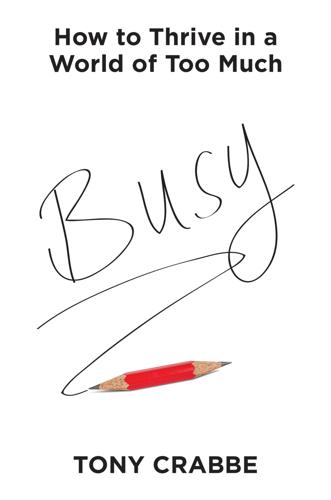
Busy
by
Tony Crabbe
Published 7 Jul 2015
The second monk was only able to get into the Zen of his walk because he had closed the file relating to the woman. In his book Getting Things Done, David Allen describes the effect of carrying lots of open files as the “monkey mind”7—when our thoughts leap from task to task, from idea to idea. Anytime we have “a lot on our minds,” we are carrying lots of thoughts, worries or tasks in our heads. The executive network—the part of the brain’s attention system particularly tasked with focus—doesn’t know where to direct attention. A monkey mind struggles to focus. In Getting Things Done, Allen suggests a simple tool for getting things off your mind that I mentioned in the opening.
…
In doing this, I freed up the processor to focus all its power on what I actually want it to do. It’s now working perfectly again. The brain works very similarly. We have a very limited processing power at any time. Any thoughts, worries or ideas that you’re holding on to are reducing your processing speed. So don’t. I read David Allen’s book Getting Things Done and the thing that made a real difference for me, was this: create a “brain dump.”12 Find a way of getting things out of your head, of cleansing your system. For most people this means capturing things in either a notebook or their smartphone. There are three crucial elements to this.
…
Their research and thinking has inspired this book. I have used their studies to build my argument, and their examples to tell my story. If you want to explore this topic further, you would be well advised to start with the following books, all of which I highly recommend. Author: David Allen Title: Getting Things Done Why you should read it: The best book on personal productivity Author: Roy Baumeister Title: Willpower Why you should read it: The definitive overview on the topic Author: Robert Cialdini Title: Influence Why you should read it: World expert on the psychology of influence Author: Dave Coplin Title: The Rise of the Humans Why you should read it: Turning the threat of digital deluge into an advantage Author: Mihaly Csikszentmihalyi Title: Flow Why you should read it: The classic on happiness through flow Author: Charles Duhigg Title: The Power of Habit Why you should read it: Probably the best explanation of the way habits work and can be changed Author: Viktor Frankl Title: Man’s Search for Meaning Why you should read it: Moving story and powerful insights Author: Daniel Gilbert Title: Stumbling on Happiness Why you should read it: This made me happy!
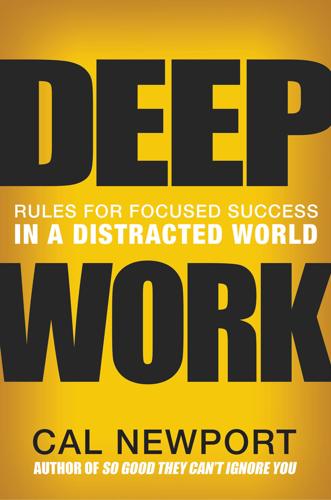
Deep Work: Rules for Focused Success in a Distracted World
by
Cal Newport
Published 5 Jan 2016
The Principle of Least Resistance “At first, the team resisted”; “putting their careers in jeopardy”; and “a better product delivered to the client” as well as a good summary of Leslie Perlow’s connectivity research can be found in Perlow, Leslie A., and Jessica L. Porter. “Making Time Off Predictable—and Required.” Harvard Business Review, October 2009. https://hbr.org/2009/10/making-time-off-predictable-and-required. For more on David Allen’s task management system, see his book: Allen, David. Getting Things Done. New York: Viking, 2001. Allen’s fifteen-element task management flowchart can be found in Allen, Getting Things Done, as well as online: http://gettingthingsdone.com/pdfs/tt_workflow_chart.pdf. Busyness as a Proxy for Productivity The h-index for an academic is (roughly speaking) the largest value x that satisfies the following rule: “I have published at least x papers with x or more citations.”
…
The second reason that a culture of connectivity makes life easier is that it creates an environment where it becomes acceptable to run your day out of your inbox—responding to the latest missive with alacrity while others pile up behind it, all the while feeling satisfyingly productive (more on this soon). If e-mail were to move to the periphery of your workday, you’d be required to deploy a more thoughtful approach to figuring out what you should be working on and for how long. This type of planning is hard. Consider, for example, David Allen’s Getting Things Done task-management methodology, which is a well-respected system for intelligently managing competing workplace obligations. This system proposes a fifteen-element flowchart for making a decision on what to do next! It’s significantly easier to simply chime in on the latest cc’d e-mail thread.
…
standardNo=0738201081&standardNoType=1&excerpt=true. “Managers themselves inhabit a bewildering psychic landscape”: from page 9 of Crawford, Matthew. Shop Class as Soulcraft. New York: Penguin, 2009. “cranking widgets”: This concept is a popular metaphor in discussing David Allen’s task management system; c.f. Mann, Merlin. “Podcast: Interview with GTD’s David Allen on Procrastination.” 43 Folders, August 19, 2007. http://www.43folders.com/2006/10/10/productive-talk-procrastination ; Schuller, Wayne. “The Power of Cranking Widgets.” Wayne Schuller’s Blog, April 9, 2008. http://schuller.id.au/2008/04/09/the-power-of-cranking-widgets-gtd-times/; and Babauta, Leo.

Getting Things Done for Hackers
by
Lars Wirzenius
Published 15 Jun 2012
Fancy software solutions . . . . . . . . . . . . . . . . . . . . . . . . . . . . . . . . . . . Non-digital solutions . . . . . . . . . . . . . . . . . . . . . . . . . . . . . . . . . . . . . 39 39 39 40 17 Conclusion A word of warning . . . . . . . . . . . . . . . . . . . . . . . . . . . . . . . . . . . . . . 41 41 18 References 43 Chapter 1 Introduction David Allen’s “Getting Things Done”, or GTD for short, is a popular, powerful system for managing one’s life. If you have trouble dealing with your e-mail inbox, or feel you’re drowning under a flood of inputs and information, or just don’t seem to have time to do everything you think you should be doing, or others want you to do, then GTD may be a good thing for you to consider.
…
I gratefully accept suggestions and will consider patches, but since the book explains what I do, I am not sure I want everyone to be able to edit it. If you want to make your own version of the book, feel free to branch the site on Branchable and make any changes you like to the content. “Getting Things Done” and “GTD” are registered trademarks of the David Allen Company. Chapter 2 Quickie overview of the GTD system GTD is a system for managing your life: what you want to achieve, how you plan to achieve that, and how you deal with all the stuff life throws at you. You decide goals, the system helps you reach them. A condensed summary of GTD: • stuff enters your life, and you either deal with it immediately, or put it in one or more inboxes • you empty your inboxes regularly from stuff • stuff is dealt with by one of the following: – do it at once (if it’s quick, or you have to, or really want to); – defer it for later; – delegate it to someone else; – file it somewhere (if you may need it later); – discard it (ignore it, throw it in a trash bin, whatever) • keep several lists: – next actions: deferred stuff; – projects: anything that needs more than one next action to be finished; – waiting for: delegated stuff; – someday/maybe: what you may want to do someday, but isn’t an active concern right now • at least once a week, process all inboxes, and review all lists • have an archiving system for documents and such • have a system for keeping handy files and other things relevant to current projects and next actions You may now skip the rest of the book. 5 6 CHAPTER 2.
…
However, this should not become a primary occupation. The goal is not to have GTD as a hobby, since that’ll just get in the way of actually doing useful things. The irony of the previous paragraph being written by someone who wrote a booklet about GTD is duly noted. 41 42 CHAPTER 17. CONCLUSION Chapter 18 References • Getting things done – https://www.librarything.com/work/1844807 • The now habit : a strategic program for overcoming procrastination and enjoying guilt-free play – https://www.librarything.com/work/7934/details/46964220 43

A World Without Email: Reimagining Work in an Age of Communication Overload
by
Cal Newport
Published 2 Mar 2021
Gloria J. Mark, Stephen Voida, and Armand V. Cardello, “‘A Pace Not Dictated by Electrons’: An Empirical Study of Work without Email,” Proceedings of the SIGCHI Conference on Human Factors in Computing Systems, May 2012, 555–64. 34. David Allen, Getting Things Done: The Art of Stress-Free Productivity, rev. ed. (New York: Penguin, 2015), 8. 35. Allen, Getting Things Done, 87–88. 36. Victor M. González and Gloria Mark, “‘Constant, Constant, Multi-tasking Craziness’: Managing Multiple Working Spheres,” Proceedings of the 2004 SIGCHI Conference on Human Factors in Computing Systems, April 2004, 113–20. 37.
…
As I’ll show, however, the side effect of this transformation is that knowledge workers began to ask more questions and delegate more tasks than ever before, leading to a state of perpetual overload that’s driving us toward despair. * * * — One way to examine our changing workloads is to look at the systems we use to keep track of them. As productivity guru David Allen argues in his canonical 2001 bestseller, Getting Things Done, the period in which email spread was defined by significant changes in time management approaches. As late as the 1980s, the “essence of being organized” involved keeping a pocket-sized Day-Timer (a paper calendar) and making a daily to-do list to help figure out how to spend the time in between appointments.
…
The specific version of the autoresponder reproduced here comes from this site: https://tim.blog/autoresponse/. 25. See, for example, Adam Grant, “In the Company of Givers and Takers,” Harvard Business Review, April 2013, https://hbr.org/2013/04/in-the-company-of-givers-and-takers. Chapter 5: The Process Principle 1. An interesting aside for fans of David Allen’s Getting Things Done methodology: the “tickler” file, a mainstay of Allen’s modern system, comes up as a standard tool in these early twentieth-century industrial productivity discussions. 2. Joseph Husband, “What a New System of Management Did for Us,” ed. John S. Runnells, System: The Magazine of Business 29, no. 4 (April 1916). 3.
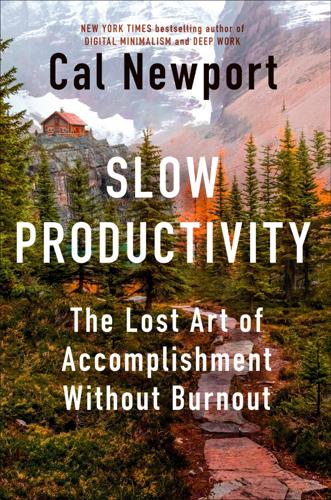
Slow Productivity: The Lost Art of Accomplishment Without Burnout
by
Cal Newport
Published 5 Mar 2024
It’s instead about making these efforts as painless as possible. Seeking, as I once put it, that “low-stress sweet spot.” SYNCHRONIZE In the fall of 2020, I published a long piece for The New Yorker titled “The Rise and Fall of Getting Things Done.” It opened on the story of Merlin Mann, a web designer and freelance project manager who found himself in the early 2000s increasingly overwhelmed by his work. It was at this point that he discovered David Allen’s Getting Things Done (GTD) methodology. Allen’s systematic approach to organizing lengthy task lists was exactly what Mann felt he needed. He started a blog called 43 Folders—a reference to the “tickler file” technique described by Allen—to catalog his growing enthusiasm for the system.[*] “Believe me, if you keep finding that the water of your life has somehow run onto the floor,” Mann wrote in an early post, “GTD may be just the drinking glass you need to get things back together.” 43 Folders grew to become one of the internet’s most popular productivity blogs, leading Mann to quit his job as a project manager to work on the site full time.
…
GO TO NOTE REFERENCE IN TEXT “In most cases, people”: Tom Davenport quotes come from a phone interview conducted in December 2019. Here’s the original New Yorker article for which this interview was conducted: Cal Newport, “The Rise and Fall of Getting Things Done,” New Yorker, November 17, 2020, newyorker.com/tech/annals-of-technology/the-rise-and-fall-of-getting-things-done. GO TO NOTE REFERENCE IN TEXT This in turn made many: Encyclopaedia Britannica Online, “Norfolk Four-Course System,” accessed August 18, 2023, britannica.com/topic/Norfolk-four-course-system. GO TO NOTE REFERENCE IN TEXT Assembly lines are dreary: “Moving Assembly Line Debuts at Ford Factory,” History, October 6, 2020, history.com/this-day-in-history/moving-assembly-line-at-ford.
…
GO TO NOTE REFERENCE IN TEXT In it, I recommended: For more on time blocking, see the explanatory video here: timeblockplanner.com. GO TO NOTE REFERENCE IN TEXT It opened on the story: Cal Newport, “The Rise and Fall of Getting Things Done,” New Yorker, November 17, 2020, newyorker.com/tech/annals-of-technology/the-rise-and-fall-of-getting-things-done. GO TO NOTE REFERENCE IN TEXT docket-clearing meetings: The careful reader might notice the homage in this name to the delightful Judge John Hodgman podcast. GO TO NOTE REFERENCE IN TEXT “Imagine everyone on your team”: Cal Newport, “It’s Time to Embrace Slow Productivity,” New Yorker, January 3, 2022, newyorker.com/culture/office-space/its-time-to-embrace-slow-productivity.
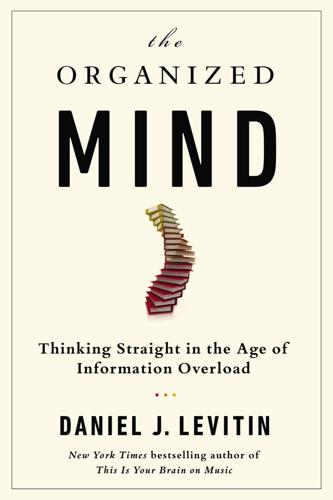
The Organized Mind: Thinking Straight in the Age of Information Overload
by
Daniel J. Levitin
Published 18 Aug 2014
Perecman (Ed.), Integrating Theory and Practice in Clinical Neuropsychology (pp. 93–138). Hillsdale, NJ: Erlbaum. what’s the latest and loudest in your head The Freelancers’ Show (Producer). (2013, August 8). The Freelancers’ Show 073—Book club: Getting things done with David Allen [Audio podcast]. Retrieved from http://www.freelancersshow.com/the-freelancers-show-073-book-club-getting-things-done-with-david-allen/ chronic diseases and premature death Warburton, D. E., Nicol, C. W., & Bredin, S. S. (2006). Health benefits of physical activity: The evidence. Canadian Medical Association Journal, 174(6), 801–809. fend off certain types of cancer Friedenreich, C.
…
You’re sitting on a bus and suddenly remember some people you need to call and some things you need to pick up at the hardware store—that’s several more cards. You’ve figured out how to solve that problem your sister is having with her husband—that goes on a card. Every time any thought intrudes on what you’re doing, you write it down. David Allen, the efficiency expert and author of books, including Getting Things Done, calls this kind of note-taking “clearing the mind.” Remember that the mind-wandering mode and the central executive work in opposition and are mutually exclusive states; they’re like the little devil and angel standing on opposite shoulders, each trying to tempt you.
…
BR8. “Your mind will remind you . . .” Allen, D. (2008). Making it all work: Winning at the game of work and business of life. New York, NY: Penguin, p. 35. “If an obligation remained recorded . . .” Allen, D. (2002). Getting things done: The art of stress-free productivity. New York, NY: Penguin, p. 15. “You must be assured . . .” Allen, D. (2002). Getting things done: The art of stress-free productivity. New York, NY: Penguin. “when information is organized in small chunks . . .” Pirsig, R. (1991). Lila: An inquiry into morals. New York, NY: Bantam. “Instead of asking . . .” Pirsig, R. (1991).

Dreaming in Code: Two Dozen Programmers, Three Years, 4,732 Bugs, and One Quest for Transcendent Software
by
Scott Rosenberg
Published 2 Jan 2006
Yin’s dashboard idea belonged to a tradition of time-line-oriented interfaces, like David Gelernter’s Lifestreams project, that proposed chronology as the organizing principle for information management. But it mixed in Chandler’s commitment to silo-leveling and David Allen’s getting-things-done principles to come up with something unique. OSAF itself was having its share of trouble getting things done, but if anyone there noticed the irony, the observation never made it into a blog post or wiki page. As Yin began the spadework of designing Chandler’s user interface, one observation in Getting Things Done might have felt especially relevant: “Things rarely get stuck because of lack of time. They get stuck because the doing of them has not been defined.”
…
She began thinking aloud in public, adding new pages to the wiki “Jungle” area at a furious pace, with CamelCase titles that broadcast their brainstorming intent: BagsOfAttributes PIMParadigmShift102003 HowCloselyTheUIShouldMapToTheDataModel BalancingPointFoundWhatDoesItMeanToGetTheBasicsReallyRight WhatKindOfMessHaveWeGottenOurselvesInto Soon after starting work at OSAF, Yin attended a daylong seminar given by David Allen, a productivity coach whose book Getting Things Done was establishing near-cult status among programmers. Kapor knew Allen—they shared an avid interest in personal organization schemes—and Allen had already visited OSAF once to present a digest version of his principles (known as GTD to fans). But Yin was the person at OSAF who would take a systematic look at how the ideas in GTD might help shape Chandler. Getting Things Done suggests that modern life and work leave us mentally beset by a host of incomplete tasks: physical objects lying around us waiting to be dealt with, incoming emails that need to be answered or filed, documents and publications that we’re supposed to read, things we’ve promised other people we will do.
…
Chandler sat at an unusual midpoint between these approaches, leaving it without clear signposts to mark the moment of “done” or even to indicate the direction in which completion might lie. But there is another consequence of software development’s halting problem, one that is less pragmatic than existential. David Allen, the Getting Things Done guru, talked about the “gnawing sense of anxiety” suffered by knowledge workers who face mountains of open-ended tasks. Software developers always have more to do; the definition of “done,” even for an interim release or small milestone, is always somewhat arbitrary. In this their work is more like an author’s than a builder’s.

Making It All Work: Winning at the Game of Work and the Business of Life
by
David Allen
Published 30 Dec 2008
Table of Contents Title Page Copyright Page Preface Chapter 1 - Introduction: From Getting Things Done to Making It All Work Chapter 2 - The GTD Phenomenon Chapter 3 - Making It All Work—the Process Chapter 4 - The Fundamentals of Self-Management Chapter 5 - Getting Control: Capturing Chapter 6 - Getting Control: Clarifying Chapter 7 - Getting Control: Organizing Chapter 8 - Getting Control: Reflecting Chapter 9 - Getting Control: Engaging Chapter 10 - Getting Control: Applying This to Life and Work Chapter 11 - Getting perspective Chapter 12 - Getting Perspective on the Runway: Next Actions Chapter 13 - Getting Perspective at Ten Thousand Feet: Projects Chapter 14 - Getting Perspective at Twenty Thousand Feet: Areas of Focus and Responsibility Chapter 15 - Getting Perspective at Thirty Thousand Feet: Goals and Objectives Chapter 16 - Getting Perspective at Forty Thousand Feet: Vision Chapter 17 - Getting Perspective at Fifty Thousand Feet: Purpose and Principles Chapter 18 - Getting Perspective: Gracie’s Gardens Revisited Chapter 19 - Making It All Work—in the Real World Chapter 20 - In closing . . . Appendixes Index GTD-Q—What is Yours? Also by David Allen Getting Things Done Ready for Anything VIKING Published by the Penguin Group Penguin Group (USA) Inc., 375 Hudson Street, New York, New York 10014, U.S.A. Penguin Group (Canada), 90 Eglinton Avenue East, Suite 700, Toronto, Ontario, Canada M4P 2Y3 (a division of Pearson Penguin Canada Inc.) Penguin Books Ltd, 80 Strand, London WC2R 0RL, England Penguin Ireland, 25 St.
…
That’s what GTD teaches and why it works uniquely in the heat of the current-day realities. GETTING THINGS DONE IS A LEARNABLE PROCESS, NOT AN INBORN TRAIT Another factor in the spread of GTD has been the increasing demand for productivity, pure and simple. The world is expecting more and more that people will have an ability to make things happen—to get things done. While inspiration and innovation are crucial, if a company or individual cannot execute the plan, the goal, the vision, all the best ideas and strategies are useless. But can you really train someone to get things done? Can a definable set of behaviors increase that facility?
…
The acronym GTD, as the methodology described in that book has come to be known, has become a standard item in the lexicon of self-management, and a Web search for the term generates literally millions of references. For several years after Getting Things Done’s publication, whenever I was asked, “What’s next?” by people enthusiastically implementing its practices, my answer was simply, “Read Getting Things Done again!” Its five stages of processing your “stuff” into real outcomes and actions and maintaining a reviewable inventory of your commitments was, is, and always will be the most effective way to get control of your immediate environment and psyche.

Taming the To-Do List: How to Choose Your Best Work Every Day
by
Glynnis Whitwer
Published 10 Aug 2015
A Project Management Approach For years, I lived with an ongoing sense that I should be doing something at all times. It ate at me. Even when I was working on something important, there was a latent unease about what else I should be doing. It was a constant underlying stress even when there was no imminent deadline or threat. It wasn’t until I read David Allen’s Getting Things Done that I discovered the reason why. Allen writes: The big problem is that your mind keeps reminding you of things when you can’t do anything about them. It has no sense of past or future. That means that as soon as you tell yourself that you need to do something, and store it in your RAM (your mind), there’s a part of you that thinks you should be doing that something all the time.[1] Aha!
…
“Opportunity Cost,” BusinessDictionary.com, accessed February 25, 2015, http://www.businessdictionary.com/definition/opportunity-cost.html. [3]. Tracy, Eat That Frog!, 15. [4]. Seth Godin, “The Jobs Only You Can Do,” Seth’s Blog, November 23, 2014, http://sethgodin.typepad.com/seths_blog/2014/11/index.html. Chapter 13 Organizing Our Work [1]. David Allen, Getting Things Done (New York: Penguin, 2001), 23. [2]. Kathi Lipp and Cheri Gregory, The Cure for the “Perfect” Life (Eugene, OR: Harvest House, 2014), 99. Chapter 14 Small Changes Matter [1]. Erika Anderson, “21 Quotes from Henry Ford on Business, Leadership and Life,” Forbes, May 31, 2013, http://www.forbes.com/sites/erikaandersen/2013/05/31/21-quotes-from-henry-ford-on-business-leadership-and-life/
…
No matter how much you do, what bothers you most is what you didn’t do. That long list of to-dos (whether written down or just rolling around in your mind) keeps you up at night. It motivates you to download more productivity apps. You read every article on time management you can find. And still you struggle to get things done. To manage all you have to do. And your list keeps growing. A lot of these tasks are mundane, everyday tasks. Things like cleaning the shower, making a menu for the week, and paying bills. But there’s more than just the required and necessary undone tasks that bother you. There are the dreams you cannot touch.
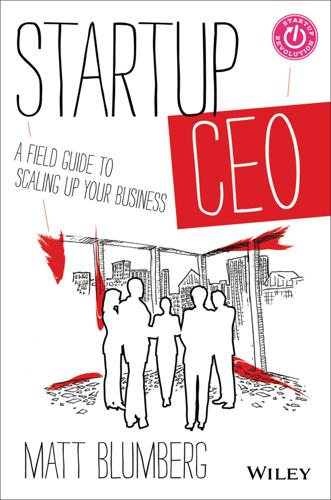
Startup CEO: A Field Guide to Scaling Up Your Business, + Website
by
Matt Blumberg
Published 13 Aug 2013
Again, this spreadsheet is up on my second monitor all day long, so any time there is a spare moment, I can review it and start working on the critical upcoming items. Once a month, I go back, review the Agenda tab, make sure it’s current, then review the To Do tab to make sure it flows from the Agenda tab. Since my agenda is, in some respects, the company’s agenda—and since I follow David Allen’s principles in Getting Things Done of having all of this stuff listed in one place—my Excel document has a series of other tabs in it as well: Delegated. This tab tracks all tasks I assign to others on my team, with next steps and due dates (color-coded, as in the To Do tab). It’s an easy mechanism for following up and making sure things are getting done on time.
…
All-in, tight management of your agenda, with whatever system you use, is a critical starting point for managing your time. An Essential Time Management Resource Although my Operating System has evolved a lot over the years and has had a lot of influences contribute to its structure and purpose, probably the largest influence on it has been David Allen’s seminal work on personal productivity, Getting Things Done. If you’re a CEO and you haven’t read this book, read it now! MANAGING YOUR CALENDAR With your overall agenda set, you can now start planning out your calendar in weeks, months, quarters and even a full year. Here are some of the key building-block elements to my calendar and how I think about them in relation to each other and to the rest of my Operating System (note that these track pretty closely with some of the main elements of the Company Operating System that I described in Chapter 17): Board meetings.
…
But if you’re constantly in the “startup” phase and never making your way into “scaling” or “growth”—if you’re never closing major deals, if you’re perpetually spending more than you make, if you’re endlessly diluting equity in round after round of fundraising—it’s probably time for a change. Internal noise. Even if your thesis is working and your company is performing well, the foundation your success is built on might be too flimsy. It’s too hard to get things done; your management team is constantly putting out fires; everything is at the edge of chaos at all times. Lots of entrepreneurs will tell you that this is simply the reality of founding a business. I disagree. It’s easy to get addicted to startup chaos. Your goal should be to minimize it. There’s an infinite variety of ways that you might pivot in response to one or many of these signs, but it ultimately comes down to a choice between two options: changing the company or changing the business.
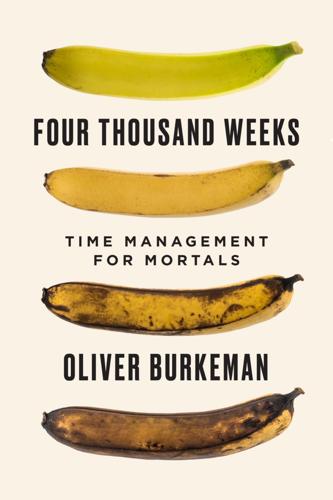
Four Thousand Weeks: Time Management for Mortals
by
Oliver Burkeman
Published 9 Aug 2021
“a generation of finely honed tools”: Malcolm Harris, Kids These Days: The Making of Millennials (New York: Back Bay Books, 2018), 76. it is “possible for a person to have an overwhelming number of things to do”: David Allen, Getting Things Done: The Art of Stress-Free Productivity (New York: Penguin, 2015), 3. “what the martial artists call a ‘mind like water’ ”: Allen, Getting Things Done, 11. “For the first time since his creation”: John Maynard Keynes, “Economic Possibilities for Our Grandchildren” (1930), downloaded from www.econ.yale.edu/smith/econ116a/keynes1.pdf. “Life, I knew, was supposed to be more joyful than this”: Charles Eisenstein, The More Beautiful World Our Hearts Know Is Possible (Berkeley, CA: North Atlantic Books, 2013), 2.
…
A few years ago, drowning in email, I successfully implemented the system known as Inbox Zero, but I soon discovered that when you get tremendously efficient at answering email, all that happens is that you get much more email. Feeling busier—thanks to all that email—I bought Getting Things Done, by the time management guru David Allen, lured by his promise that it is “possible for a person to have an overwhelming number of things to do and still function productively with a clear head” and “what the martial artists call a ‘mind like water.’ ” But I failed to appreciate Allen’s deeper implication—that there’ll always be too much to do—and instead set about attempting to get an impossible amount done.
…
And as long as I was always just on the cusp of mastering my time, I could avoid the thought that what life was really demanding from me might involve surrendering the craving for mastery and diving into the unknown instead. In my case, that turned out to mean committing to a long-term relationship and, later, making the decision with my wife to try to start a family—two things I’d notably failed to get done with any number of systems for getting things done. It had been more comforting to imagine that I might eventually “optimize” myself into the kind of person who could confront such decisions without fear, feeling totally in charge of the process. I didn’t want to accept that this was never going to happen—that fear was part of the deal, and that experiencing it wouldn’t destroy me.

Making Ideas Happen: Overcoming the Obstacles Between Vision and Reality
by
Scott Belsky
Published 31 Mar 2010
However, you will still need time for processing—going through all of your day’s notes and communications and distilling them down to the primary elements. For those who still take paper notes and appreciate tangible project management, you will want to use a tangible in-box—a general pile of stuff that has yet to be classified. Most productivity frameworks—like David Allen’s Getting Things Done—suggest such a central clearing-house for all of the stuff that you accumulate but can’t immediately execute or file. This in-box is not a final destination, but rather a transit terminal where items await processing. During a busy day of meetings, you will not have time to start taking action or filing things away.
…
Ellenthal, Jon e-mail Action Steps and feedback and Insecurity Work and emotions energy constraints and Energy Line Insecurity Work and rewards and and urgent vs. important tasks work space and Engadget Engine Room entrepreneurs Evernote “Everyday” project execution and abandoning ideas biological and psychological tendencies and change and community and constraints and conviction and following up meetings and progress and rewards and shipping visual organization and experimentation F Facebook failure, benefits of Farah, Roger Fast Company Fawkes, Piers fear feedback appreciation-based self-awareness and flexibility Flickr Flow: The Psychology of Optimal Experience (Csikszentmihalyi) focus community and Dreamers and work space and focus area following up Fortune 43folders.com Free: The Future of a Radical Price (Anderson) Freedom Park Freelancers Union frequency theory G Gallup Inc. games Geek Dads General Electric Getting Things Done (Allen) Gizmodo Gladwell, Malcolm Godin, Seth Goldman Sachs GOOD Google go-to people Greenberg, Bob Grisham, John Group Genius (Sawyer) group therapy GSD&M Idea City Guilt & Pleasure H happiness HarperCollins Harris, Jonathan Harvard Business Review Hennes, Tom Hewlett-Packard hoarding: of information of urgent items Holt, Courtney Honda Horowitz, Sara hot spots Hsieh, Tony I IBM ideas: abandoning community and competition and marketing of new, generating sharing sharing ownership of skepticism about Idelsohn Society for Musical Preservation IDEO The Shop at Illusion of Life, The: Disney Animation (Johnston and Thomas) impact important vs. urgent tasks Impressionist movement i n-box Inc.
…
Take a few hours each day (or a minimum of a few nights per week) to process the contents of your in-box. As you review the pile (or list of e-mails), discern what is actionable and what is not. • If actionable, identify the Action Steps. For Action Steps that can be accomplished quickly (like make a short phone call or pay a bill), do them right away. David Allen calls this the “two-minute rule”—if it can be done in under two minutes, it should be done right away. After all, it will take a minute or so just to enter it into your system, so why not just take care of it already? • Whatever action management system you use, Action Steps should be recorded in a consistent way, assigned to a project, and given a due date (when applicable).
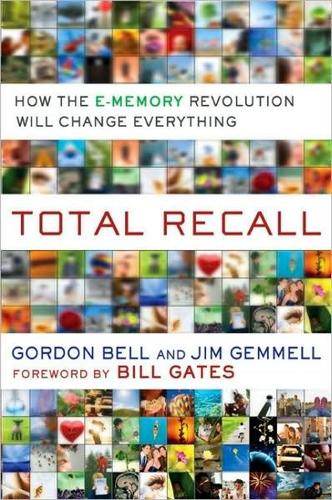
Total Recall: How the E-Memory Revolution Will Change Everything
by
Gordon Bell
and
Jim Gemmell
Published 15 Feb 2009
LeDoux in Edge. http://www.edge.org/q2008/q08_1.html David Allen’s Getting Things Done advocates a “logical and trusted system outside of your head.” His insight that “if your reference material doesn’t have a nice clean edge to it, the line between actionable and nonaction able items will blur” points out how important an e-memory of reference material, in addition to action items, can be. In addition to the Getting Things Done book, there are conferences, seminars, software tools, and a host of Web articles devoted to helping you implement the Getting Things Done methodology. Allen, David. 2003. Getting Things Done: The Art of Stress-Free Productivity.
…
You will track where you have left things like your glasses, either by noting where your devices last detected their RFID tag, or by taking pictures of them. When your mind is absent, your e-memory will always be there. Having too much on my mind doesn’t just make me absentminded; it can make me feel mentally cluttered, impeding my productivity. David Allen’s popular book and seminar series Getting Things Done stands on the central premise that we are hindered by mental clutter: First of all, if it’s on your mind, your mind isn’t clear. Anything you consider unfinished in any way must be captured in a trusted system outside your mind. . . . Unlike your bio-memory, your e-memory will never be overwhelmed.
…
It will be at the heart of businesses like law firms, software companies, hospitals, banks, retail stores, electricians, winemakers, and airports. It will be employed by nonprofit organizations of all kinds, including homeowners’ associations, school boards, lodges, churches, and hobby clubs. From the boardrooms of gigantic corporations down to the kitchen table of a small family, Total Recall will help get things done. CHAPTER 5 HEALTH ‘Let’s have a look,” said the doctor. I parted the baby-blue hospital gown to expose my chest, which was dappled with faint red blotches. The doctor peered at them appraisingly. “Yes . . . well . . . they look a bit better, don’t they?” he said. “I think we can get you out of here by Saturday.”

The Personal MBA: A World-Class Business Education in a Single Volume
by
Josh Kaufman
Published 2 Feb 2011
For less than $100 a month, you can enlist the help of a team of professionals to help you get things done. If you have little experience with delegation, it’s an experiment worth trying.6 Deferment—putting the task off until later—is effective for tasks that aren’t critical or time dependent. Don’t feel bad about putting some things off—the best way to bog yourself down is to try to handle too many things at the same time. Saving noncritical tasks for later is a good way to keep your attention and energy focused on what’s most important. In Getting Things Done, David Allen recommends keeping a “someday/ maybe” list of things you’d like to do someday but that aren’t that important right now.
…
Simple: focus only on the action you need to take next to move toward your Goal. The Next Action is the next specific, concrete thing you can do right away to move a project forward. You don’t have to know everything that must be done to make progress on a project—all you need to know is the very next thing you can do to move the project forward. David Allen, the author of Getting Things Done, coined the term to describe one of the core steps of his “fundamental process”:1. Write down a project or situation that is most on your mind at this moment. 2. Now describe in a single written sentence your intended desired outcome for this problem or situation. What needs to happen to mark this “done”?
…
—SAMUEL JOHNSON, ESSAYIST AND MAN OF LETTERS This book is a high-level overview of an extremely wide body of useful business literature. If you’re interested in continuing your studies, I highly recommend starting with any of these books: PRODUCTIVITY AND EFFECTIVENESS ▶ 10 Days to Faster Reading by Abby Marks-Beale ▶ StrengthsFinder 2.0 by Tom Rath ▶ Getting Things Done by David Allen ▶ The Power of Less by Leo Babauta ▶ The 80/20 Principle by Richard Koch ▶ Bit Literacy by Mark Hurst ▶ The Power of Full Engagement by Jim Loehr and Tony Schwartz THE HUMAN MIND ▶ Brain Rules by John Medina ▶ Making Sense of Behavior: The Meaning of Control by William T.

Reinventing Organizations: A Guide to Creating Organizations Inspired by the Next Stage of Human Consciousness
by
Frederic Laloux
and
Ken Wilber
Published 9 Feb 2014
Power is naturally distributed and there is no need to invest time and effort to prod middle managers to “empower” people below them. If managers have no weapons, there is no need to invest in a culture that keeps people from using their weapons. This is the experience that David Allen, of Getting Things Done fame, had when he adopted Holacracy in his consulting and training firm, the David Allen Company: As we’ve distributed accountability down and throughout the organization, I’ve had much less of my attention on the culture. In an operating system that’s dysfunctional, you need to focus on things like values in order to make that somewhat tolerably, but if we’re all willing to pay attention to the higher purpose, and do what we do and do it well, the culture just emerges.
…
I wasn’t quite sure how to resolve a lot of those things but it was really a spark of dissatisfaction that led to starting the software company: “My God there’s got to be a better way, there’s just got to be something better than this.”52 Robertson and his two co-founders started experimenting relentlessly with any organizational practice that sounded promising. Where the ideas came from didn’t matter—inspiration was found in places as different as agile software development, sociocracy, and David Allen’s Getting Things Done. Anything that worked was kept; anything that didn’t work was discarded. The almost daily new experiments with different organizational practices were taxing, as Robertson recalls: I think there was [at Ternary Software] a real appreciation for the kind of culture where experimentation and change was embraced.
…
At Buurtzorg, all new team members are trained in problem solving and meeting practices, so as to operate as a team without a boss to call the shots. Similarly, all new recruits at Morning Star attend a seminar on the basics of self-management. Particularly for people who were previously in leadership positions, the transition can be difficult. They have to learn to get things done without the blunt weapon of command and control. Getting some help to ease the transition is no luxury. Paul Green Jr., who heads Morning Star’s Self-Management Institute, estimates that close to 50 percent of people who formerly had senior positions in other organizations (VP levels or above) end up leaving the organization after a year or two “because they have a hard time adapting to a system where they can’t play God.”
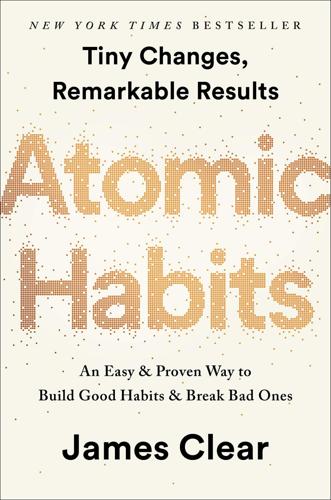
Atomic Habits: An Easy & Proven Way to Build Good Habits & Break Bad Ones
by
James Clear
Published 15 Oct 2018
decisive moments: Shoutout to Henri Cartier-Bresson, one of the greatest street photographers of all time, who coined the term decisive moment, but for an entirely different purpose: capturing amazing images at just the right time. the Two-Minute Rule: Hat tip to David Allen, whose version of the Two-Minute Rule states, “If it takes less than two minutes, then do it now.” For more, see David Allen, Getting Things Done (New York: Penguin, 2015). power-down habit: Author Cal Newport uses a shutdown ritual in which he does a last email inbox check, prepares his to-do list for the next day, and says “shutdown complete” to end work for the day.
…
It’s easy to be in motion and convince yourself that you’re still making progress. You think, “I’ve got conversations going with four potential clients right now. This is good. We’re moving in the right direction.” Or, “I brainstormed some ideas for that book I want to write. This is coming together.” Motion makes you feel like you’re getting things done. But really, you’re just preparing to get something done. When preparation becomes a form of procrastination, you need to change something. You don’t want to merely be planning. You want to be practicing. If you want to master a habit, the key is to start with repetition, not perfection.

Business Metadata: Capturing Enterprise Knowledge
by
William H. Inmon
,
Bonnie K. O'Neil
and
Lowell Fryman
Published 15 Feb 2008
Here are a few ideas, some of which come from a wonderful book by David Allen called Getting Things Done. ✦ Keep a Next Steps list, and keep it open on your desktop. Then when an idea hits you like “I have to go to the pharmacy and pick up my prescription” it is on the list. Check the Next Steps list frequently throughout the day. ✦ Keep an Idea Incubator where you can jot down ideas that come to you as fleeting thoughts throughout the day. ✦ Use the notes feature in your e-mail application to record thoughts. ✦ Use notes on your phone if you have such a feature on your phone. David Allen suggests that every task that has more than one step is really a “project” and you should record the Next Step in your Next Steps list.
…
Reactive versus proactive governance is more effective, and we have coined the term “Governance Lite” to describe it. Finally, the end of the chapter shared some new Web 2.0 enabling technologies and showed how these products help to capture business metadata directly from businesspeople, with no programmer involvement. 6.12 References ✦ Allen, David. Getting Things Done. New York: Penguin Group, 2001. ✦ Amazon.com. Review of The Wisdom of Crowds. http://www.amazon.com/ Wisdom-Crowds-James-Surowiecki/dp/0385721706/sr=1-1/qid=1162589559/ ref=pd_bbs_sr_1/103-0890407-7574238?ie=UTF8&s=books 120 Chapter 6 Business Metadata Capture ✦ Dixon, Nancy M. Common Knowledge.

The Manager’s Path
by
Camille Fournier
Published 7 Mar 2017
However, I have found the ideas in David Allen’s book Getting Things Done1 to be useful to think about, and I recommend reading it even if you don’t adopt the whole process. In the meantime, my general time-management philosophy will serve you well no matter what your tactics might be. Managing your time comes down to one important thing: understanding the difference between importance and urgency. Pretty much all of your tasks will fall on a graph of these two elements. Roughly, they are in one of four quadrants (see Table 6-1). 1 David Allen, Getting Things Done: The Art of Stress-Free Productivity (New York: Penguin, 2001). 104 | THE MANAGER’S PATH Table 6-1.
…
Ruling with Fear, Guiding with Trust Camille considers herself to be a good leader: technical, charismatic, capable of making decisions and getting things done. She’s also sometimes short-tempered, and when people don’t live up to her expectations or things go wrong, she can be visibly annoyed and openly angry. She doesn’t realize that this hard edge and short temper are making people afraid of her. They don’t want to risk getting blamed for failure or openly criticized for making a mistake, so they take fewer risks and hide their mistakes. Camille has accidentally created a culture of fear. Michael is also a good leader: technical, charismatic, capable of making decisions and getting things done. He’s also good at keeping his cool.
…
There are people who: 66 | THE MANAGER’S PATH • Struggle with saying no to distractions and end up helping with other projects instead of finishing their own • Do good work but are hard for others to work with, tending to be overly critical or rude in meetings, code reviews, or other collaborative activities • Struggle to break their work up into intermediate deliverables, and don’t balance planning and design with getting things done • Work well with other engineers but do not work well with other departments or teams • Struggle to follow the accepted best practices of the team, cut corners, or otherwise do sloppy work More often, you’ll get a lot of scattershot feedback that’s moderately helpful at best. Some people will seem to be reaching for something to say, and others will have a particularly harsh impression that no one else seems to share.
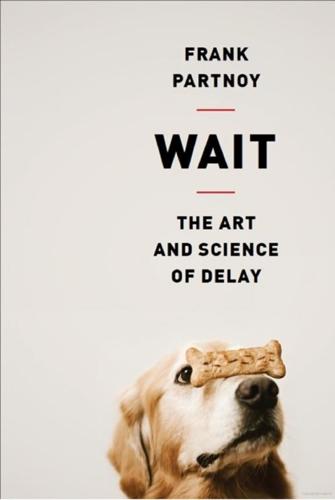
Wait: The Art and Science of Delay
by
Frank Partnoy
Published 15 Jan 2012
Yuen, Procrastination: Why You Do It, What to Do About It (Da Capo Press, 1983). 5. Stephen R. Covey, The Seven Habits of Highly Effective People (Simon & Schuster, 1989); Stephen R. Covey, A. Roger Merrill, and Rebecca R. Merrill, First Things First (Simon & Schuster, 1994). 6. David Allen, Getting Things Done: The Art of Stress-Free Productivity (Penguin Putnam, 2001). 7. Piers Steel, The Procrastination Equation: How to Stop Putting Things Off and Start Getting Things Done (HarperCollins, 2011). 8. Timothy A. Pychyl, Jonathan M. Lee, Rachelle Thibodeau, and Allan Blunt, “Five Days of Emotion: An Experience Sampling Study of Undergraduate Student Procrastination,” Journal of Social Behavior and Psychology 15(2000): 239–254. 9.
…
Managers began following Peter Drucker, the consultant, who advised, “First things first; second things not at all.”3 Jane Burka and Lenora Yuen wrote a best seller about how to avoid procrastinating, and their “Procrastination Workshops” became popular.4 Self-help guru Stephen Covey told us that highly effective people do “first things first.”5 David Allen coached us to “Get Things Done.”6 Over time we began to feel terribly guilty about procrastinating, yet we did it even more. The percentage of people who say they procrastinate “often” has increased sixfold since 1978.7 Students report spending over one-third of their time procrastinating.8 According to some studies, nearly one in five adults is a “chronic” procrastinator. 9 Our focus on procrastination is relentless.
…
One puzzle in this study was that, even though they were paid less, the “last minute” participants reported enjoying the task far more than the others. Getting things done might not be fun. 57. David M. Garner and Susan C. Wooley, “Confronting the Failure of Behavioral and Dietary Treatments of Obesity,” Clinical Psychology Review 11(1991): 767. 58. Tara Parker-Pope, “The Fat Trap,” New York Times Magazine, December 28, 2011. 59. George Ainslie, “Procrastination: The Basic Impulse,” paper presented at the CUNY Workshop, New York (July 9, 2008), p. 9. 60. Paul Graham, “Good and Bad Procrastination,” December 2005, http://www.paulgraham.com/procrastination.html. 61. John Perry, “How to Procrastinate and Still Get Things Done,” Chronicle of Higher Education, February 23, 1996. 62.
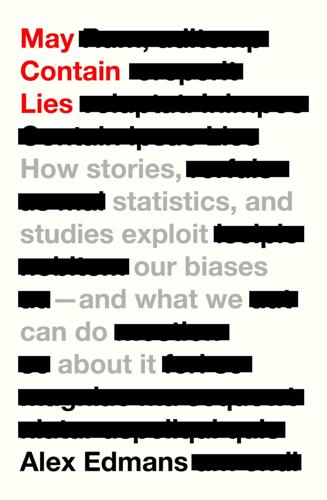
May Contain Lies: How Stories, Statistics, and Studies Exploit Our Biases—And What We Can Do About It
by
Alex Edmans
Published 13 May 2024
Yap (2010): ‘Power posing: brief nonverbal displays affect neuroendocrine levels and risk tolerance’, Psychological Science 21, 1363–8. 7 Ranehill, Eva et al. (2015): ‘Assessing the robustness of power posing: no effect on hormones and risk tolerance in a large sample of men and women’, Psychological Science 26, 652–6. 8 Wakefield, A. et al. (1998): ‘Ileal-lymphoid-nodular hyperplasia, non-specific colitis, and pervasive developmental disorder in children’, Lancet 351 (9103): 637–41. 9 National Health and Medical Research Council (2015): ‘NHMRC information paper: evidence on the effectiveness of homeopathy for treating health conditions’, March 2015. 10 Grant Thornton (2019): ‘Corporate governance and company performance: a proven link between effective corporate governance and value creation’. 11 Fabo, Brian et al. (2021): ‘Fifty shades of QE: comparing findings of central bankers and academics’, Journal of Monetary Economics 120, 1–20. 12 Allen, David (2001): Getting Things Done, Penguin. 13 Keegan, Paul (2007): ‘How David Allen mastered getting things done’, Business 2.0 Magazine, 21 June 2007. 14 Hatmaker, Taylor (2010): ‘Twitter plans to bring prompts to “read before you retweet” to all users’, TechCrunch, 24 September 2020. 15 Pennycook, Gordon et al. (2021): ‘Shifting attention to accuracy can reduce misinformation online’, Nature 592, 590–95. 10.
…
Even if they could overcome the narrative fallacy and perfectly identify what led to their accomplishments, without scientific research we don’t know whether these principles work in general. But many other books, particularly in the self-help genre, are written by authors with neither proficiency in producing or synthesizing evidence, nor expertise from leading companies. A popular book on time management, Getting Things Done,12 is penned by David Allen, a former landscaper, vitamin distributor, glass blower, travel agent, petrol station manager, U-Haul dealer, moped salesman and chef.13 It’s sold over 1.5 million copies, but it’s not clear what Allen’s expertise is based on. The book contains almost no references; instead his assertions often start with ‘in my experience’, as if that were proof.
…
They may be based on flawed research by the same author (Presence ), misportray research by other authors (Outliers, Why We Sleep ), conduct their own flimsy research (Built to Last, The Spirit Level), or abandon research entirely and over-extrapolate from anecdotes (Start with Why) or shoot from the hip (Getting Things Done). Such fact-checking websites already exist in other contexts. Quote Investigator verifies whether quotes were actually made by the people they’re attributed to and digs into the context. Full Fact in the UK, PolitiFact in the US and Pagella Politica in Italy verify claims made by politicians, journalists and public institutions.
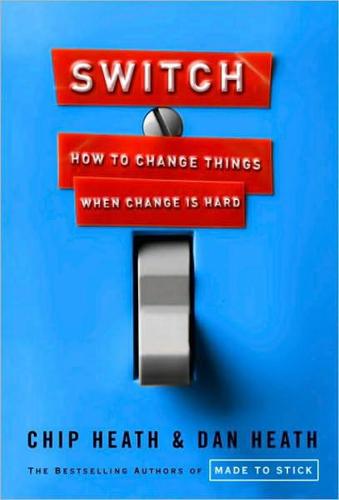
Switch: How to Change Things When Change Is Hard
by
Chip Heath
and
Dan Heath
Published 10 Feb 2010
You want to select small wins that have two traits: (1) They’re meaningful. (2) They’re “within immediate reach,” as Bill Parcells said. And if you can’t achieve both traits, choose the latter! (The 5-Minute Room Rescue wasn’t very meaningful by itself, but it made great change possible.) David Allen, author of Getting Things Done, the quintessential personal productivity book, echoes the importance of setting goals that are within reach. He says that most people make a fundamental mistake when they create their to-do lists: They dash off lots of items: “collect expenses,” “deal with Helen,” “work on slideshow,” “tires,” and so on.
…
See Bill Parcells (2001), “The Tough Work of Turning Around a Team,” reprinted in Harvard Business Review on Turnarounds (pp. 105–114), Boston: Harvard Business School Press; the quotation is on pp. 111–112. UCLA coach John Wooden. Quoted in Robert Maurer (2004), One Small Step Can Change Your Life: The Kaizen Way, New York: Workman, p. 11. Small wins. See Weick (1984), “Small Wins: Redefining the Scale of Social Problems,” American Psychologist, 39(1), p. 46. David Allen. See Allen (2001), Getting Things Done, New York: Viking Penguin, p. 239. Al-Anon. See Al-Anon Family Groups (1995), How Al-Anon Works for Families and Friends of Alcoholics, Virginia Beach, VA: Al-Anon Family Groups; the quotation is on p. 73. George kissed Paula. See Michele Weiner-Davis (1992), Divorce Busting, New York: Simon & Schuster, p. 92.
…
Emotion is the Elephant’s turf—love and compassion and sympathy and loyalty. That fierce instinct you have to protect your kids against harm—that’s the Elephant. That spine-stiffening you feel when you need to stand up for yourself—that’s the Elephant. And even more important if you’re contemplating a change, the Elephant is the one who gets things done. To make progress toward a goal, whether it’s noble or crass, requires the energy and drive of the Elephant. And this strength is the mirror image of the Rider’s great weakness: spinning his wheels. The Rider tends to overanalyze and overthink things. Chances are, you know people with Rider problems: your friend who can agonize for twenty minutes about what to eat for dinner; your colleague who can brainstorm about new ideas for hours but can’t ever seem to make a decision.
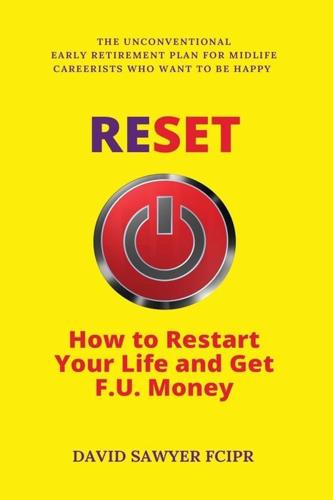
Reset: How to Restart Your Life and Get F.U. Money: The Unconventional Early Retirement Plan for Midlife Careerists Who Want to Be Happy
by
David Sawyer
Published 17 Aug 2018
[450] “throw stones at every dog that barks”: “13 Things You Should Give Up If You Want To Be Successful – Medium.” 26 Dec. 2016, toreset.me/450. [451] “Deep work is like a super power in our increasingly competitive twenty-first century economy”: “Deep Work: Rules for Focused Success in a Distracted... – Cal Newport.” 5 Jan. 2016, toreset.me/451. [452] David Allen’s GTD system: “Getting Things Done – Wikipedia.” toreset.me/452. [453] If you’re one of the 70%: “Quiet: The Power of Introverts in a World That Can’t Stop... – Amazon UK.” toreset.me/453, p. 76. [454] “They make people sick, hostile, unmotivated and insecure”: Ibid., p. 84. [455] “freedom from interruption”: “Why You Can Focus in a Coffee Shop but Not in Your Open Office.” 18 Oct. 2017, toreset.me/455
…
There’ll never be a time when the stars are aligned, and it’s the perfect night to do something. Don’t wait for divine inspiration to strike, take small actions daily, and luck will come to you. 3. Routines and habits: be boring We are what we repeatedly do. Excellence, then, is not an act, but a habit[441]. Will Durant One of the keys to achieving and getting things done is adopting and adapting routines to suit your aims and circumstances. Mason Currey’s Daily Rituals book unpicks how the greatest creatives of the modern era, from Beethoven to Hemingway, went about their business. Some preferred mornings, some worked through the night. Maya Angelou wrote her books in motel rooms, Thomas Wolfe at a makeshift standing desk (the top of his fridge).
…
I have read and can recommend them all. Non-affiliate Amazon links to each book can be found in the Notes, should you wish to buy. (The book page numbers in the Notes refer to the book editions in the Bibliography, not those in the Amazon links, albeit in most cases they will be one and the same.) Allen, David. Getting Things Done: The Art of Stress-Free Productivity. Little Brown Book Group, 2015. Arana, Marie. The Writing Life: Writers on How They Think and Work: A Collection from the Washington Post Book World. Public Affairs, 2003. Burkeman, Oliver. Help!: How to Become Slightly Happier and Get a Bit More Done.

Remote: Office Not Required
by
Jason Fried
and
David Heinemeier Hansson
Published 29 Oct 2013
More Praise for Remote “What you’ll find in Remote is profound advice from guys who’ve succeeded in the virtual workforce arena. This is a manifesto for discarding stifling location- and time-based organizational habits in favor of best work practices for our brave new virtual and global world. If your organization entrusts you with the responsibility to get things done, this is a must-read.” —David Allen, internationally bestselling author of Getting Things Done: The Art of Stress-Free Productivity “Remote is the way I work and live. Now I know why. If you work in an office, you need to read this remarkable book, and change your life.” —Richard Florida, author of the national bestseller The Rise of the Creative Class: And How It’s Transforming Work, Leisure, Community and Everyday Life “In the near future, everyone will work remotely, including those sitting across from you.
…
They exhibit the two key qualities, as Joel Spolsky labeled them in his “Guerrilla Guide to Interviewing”:* Smart, and Gets Things Done. When the work product is out in the open, it’s much easier to see who’s actually smart (as opposed to who simply sounds smart). The collective judgment rarely even has to be verbalized. Conversely, if the work keeps getting flagged with problems, it’s evidence that the Smarts aren’t sufficiently present for the work at hand. Also, if the duration between installments of new work or tasks being checked off is persistently lengthy, it’s a sign that the Gets Things Done bit is missing. Both of these weaknesses are easier to miss when you see someone at the office every day.
…
Both of these weaknesses are easier to miss when you see someone at the office every day. Especially if they’re just generally a nice person. The mental shortcut usually goes: In the office from 9–5 + nice = must be a good worker. Of course, someone who’s either not smart enough for the job or doesn’t get things done is always found out eventually. But since few people will tell on a colleague unless the problem is of serious magnitude, it’s common to get stuck with lots of people who put in the hours and are plenty nice, but don’t fit the criteria established for being a great worker. Remote work speeds up the process of getting the wrong people off the bus and the right people on board.† On writing well Being a good writer is an essential part of being a good remote worker.

Personal Kanban: Mapping Work, Navigating Life
by
Jim Benson
and
Tonianne Demaria Barry
Published 2 Feb 2011
Unlike Covey’s Time Management Matrix, the Priority Filter does not assign value judgments to your actions, nor does it dictate which tasks should be addressed first. Instead, it is context-driven and flexible, allowing you to see your priority assumptions at any given moment. GTD Prioritization Created by David Allen, “Getting Things Done” (GTD) is an organizational method to control backlogs and capture ideas for future work.6 Like Personal Kanban, GTD improves your understanding of how and why work is conducted. GTD relies on lists and folders with review disciplines to record and manage massive active and inactive backlogs.
…
Real options theory has potent lessons for personal work, but this is beyond the scope of this book. 3 Stephen Covey, Seven Habits of Highly Effective People (New York: Free Press, 1989) and First Things First (New York: Free Press, 1994). 4 Stephen Covey, 7 Habits of Highly Effective People, (New York: Free Press, 1989) p. 151. 5 Corey Ladas, Scrumban: Essays on Kanban Systems for Lean Software Development, (Seattle: Modus Cooperandi Press, 2008) p. 163. 6 David Allan, Getting Things Done (New York: Penguin, 2002). 7 For cumulative flow diagrams and other measures, see personalkanban.com. CHAPTER 7 STRIVE FOR IMPROVEMENT We breed dragons so our heroes can slay them. We love our heroes. We invest our time, our money, and our faith in their ability to prevail under extraordinary circumstances.
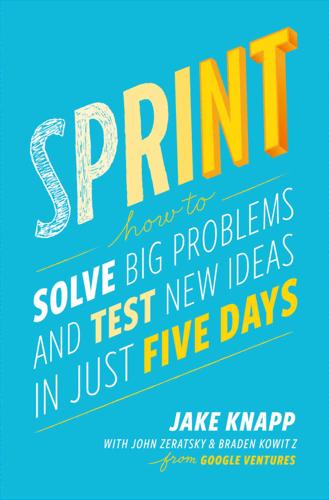
Sprint: How to Solve Big Problems and Test New Ideas in Just Five Days
by
Jake Knapp
,
John Zeratsky
and
Braden Kowitz
Published 8 Mar 2016
Each sketch consists of words, boxes, and the occasional stick figure, drawn on normal printer paper and normal sticky notes with a normal pen. Simple, right? So . . . Okay, you’re all set. Go ahead and sketch a great solution! We’re just kidding. That blank sheet of paper always intimidates us. So, inspired by productivity expert David Allen, we break the process into steps. In his book Getting Things Done, Allen provides a smart strategy for daunting jobs. The secret, Allen writes, is not to think about the task as one monolithic effort (like “Pay taxes”), but instead to find the first small action needed to make progress (like “Collect tax paperwork”) and go from there.
…
A., 229 feedback, 207 reaction vs., 169–70 finance experts, 34 Fitbit, 171 fitness training, automated, 171–74 FitStar sprint, 171–74, 189, 206 Flatiron Health sprint, 60–64, 76, 85, 88, 100–101, 153, 176, 224 Flickr, 143 focus, sprint process emphasis on, 32 Foundation Medicine sprint, 16, 176–77, 185 FoundationOne, 176 Freeman, James, 21–25, 30, 103 Gebbia, Joe, 210–11 genetic analysis, in cancer treatments, 176 George Mason University, 38 Getting Things Done (Allen), 108–9 Giarusso, Serah, 24, 103 Glitch (video game), 128–29, 143 Gmail, 2, 4 goals, ambitious, 229 goals, long-term, 55–57, 61, 67, 110, 138, 141, 147 dangerous assumptions and, 56–57 in Flatiron Health sprint, 62–63 Goldilocks quality, 170, 207 Gonzalez, Tony, 171–72 Google, 60 experimentation culture of, 1 self-driving car of, 16 Google Earth, 83 Google Forms, 121 Google Hangouts, 3 Google Search, 4 Google Ventures (GV), 4–6, 7, 12, 15, 16, 60, 85, 113, 130, 171, 176, 201, 231 Google X, 4 Grace, Merci, 130, 131, 143–44, 152, 156, 175, 216–17, 221, 222 Graco sprint, 27–28 Green, Bobby, 76, 85, 86 Grijalva, Dave, 171–74 Harry Potter and the Philosopher’s Stone (Rowling), 196, 196n heat map, in deciding process, 131, 132–35 high stakes, as challenge, 26 honesty, in deciding process, 139–40 hotels, guest satisfaction and, 10, 56 Howard, Ron, 53 How Might We notes, 68, 73–82, 110 in Blue Bottle sprint, 73–74 challenges and, 77–78 in Flatiron Health sprint, 76–78 maps and, 81–82 organizing, 79–80 prioritizing, 80–81 target and, 87 HTML, 184 Hurley, Chad, 6 IdeaPaint, 44 IDEO, 73 illusion, 165–66 see also façades Incredibles, The (film), 149 Indian Ocean, 84 industrial companies, sprints and, 27–28 Ingram, Alex, 62, 76 interruptions, productivity and, 38–39 Interviewer, 188, 190, 204–5, 217, 225 tips for, 212–15 interviews, 196–200, 201–15 being a good host in, 212 broken questions in, 214–15 context questions in, 202, 205–6 curiosity mindset in, 215 debriefing in, 202, 209–10 detailed tasks in, 202, 208–9 as emotional roller coaster for sprint team, 197 feedback in, 207 in FitStar sprint, 197, 206 in FitStar test, 208 five-act structure of, 202 ideal number of customers for, 197–99 introducing prototypes in, 202, 206–7 in One Medical sprint, 199–200 open-ended vs. leading questions in, 212–13 power of, 210–11 schedule of, 199 in Slack sprint, 217 team observation of, see interviews, learning from thinking aloud in, 207–8 welcome in, 202, 204–5 “why” questions in, 199–200 interviews, learning from: in Blue Bottle sprint, 223–24 in Flatiron Health sprint, 224 group note-taking in, 219–21 importance of real-time team observation in, 202–4, 218–19 looking for patterns in, 222 in Savioke sprint, 223 in Slack sprint, 220–21, 223 sprint questions and, 222–23 Invite Media, 60 iPads, 171–73, 178, 189 as banned from sprint room, 41 JavaScript, 184 Keynote, 171, 173, 175, 176, 177, 178, 184–85, 186 Knapp, Jake, 24, 27–28, 30, 47, 48, 60, 62, 76, 77, 85, 107n, 109 Kowitz, Braden, 5, 22, 23–24, 30, 43, 60, 76, 156, 216 Kranz, Gene, 53, 55, 85 Lachapelle, Serge, 3 Lancelotta, Mary Pat, 176 Landauer, Thomas K., 198n laptops, as banned from sprint room, 41 Lau, Tessa, 11, 12, 178 lean development, 17 learning, see interviews, learning from Lightning Demos, 96–101, 110 Lord of the Rings, The (Tolkien), 59, 60 Lowe, David, 27 McKinsey & Company, 230 Makers, 187, 188 mapping the problem, 16, 59–67, 110, 230 in Blue Bottle sprint, 23–24, 65, 66 division of labor and, 101–2 experts and, 69–70, 76, 77 in Flatiron Health sprint, 62–63 How Might We notes and, 81–82, 85 in Savioke sprint, 10, 64–65, 66 steps in, 66 as story, 65–66 target and, 84, 85–86 Margolis, Michael, 5, 12, 60, 62, 201–2, 203, 204, 206, 208, 209, 212, 214, 216, 217 Maris, Bill, 4–5 markers, dry-erase, 75 marketing experts, 34 Maser, Mike, 171–73 “Mathematical Model of the Finding of Usability Problems, A” (Nielsen and Landauer), 198n mechanics, of product or service, 70–71 Medium, 6 Medium sprint, 224 Meehan, Bryan, 22 meetings, frustrations of, 127–28, 230 Microsoft Word, 186 Mid-Ocean Ridge, 83–84, 87 “Mind Reader, The” (Blue Bottle solution sketch), 104–6, 115 Mission Control, 53–54, 225 momentum, regaining, 26 Move Loot sprint, 113 movies, façades in, 165–66, 173 My Neighbor Totoro (film), 98 NASA, 54 Nest, 16 Newton, Alice, 195–96 Newton, Nigel, 195–96 New York Times, 15, 130, 152, 153, 188 Nielsen, Jakob, 197–98, 198n no-devices rule, 41, 110 Note-and-Vote, 146–47 note-taking: on interviews, 219–21 sketching and, 109, 110 see also How Might We notes Ocean’s Eleven (film), 29–30, 36, 37, 225 office supplies, for sprint rooms, 45 One Medical Group sprint, 180–82, 185–86, 199 opening scene, 188 OstrichCo, 139–40 paper, for sprint rooms, 44 paper coffee filters, 95–96 patterns, in customer reactions to prototypes, 222 permission, Facilitators and, 89 personal trainers, 171 phones, as banned from sprint room, 41 Photoshop, 184 Pitt, Brad, 29, 36 Pixar, 149 plate tectonics, 84 PlayStation, 178 Porter, Josh, 89 Post-It notes, see sticky notes PowerPoint, 184, 186 previous efforts, see existing solutions priorities, setting, 54–55 “Priority Inbox” project, 2–3 Procter & Gamble, 73 productivity, interruptions and, 38–39 progress, rapid, from sprint process, 31 prototype mindset, 168–69, 230 prototypes, prototyping, 16, 60, 183–90 actors and scripts in, 186 appearance of reality in, 169–70 Asset Collector in, 188 in Blue Bottle sprint, 25, 28, 104–6 Brochure Façades in, 185 Deciders and, 31, 32 deciding on, see deciding as disposable, 169 division of labor in, 183, 187 façades and, see façades Facilitator and, 187 in FitStar sprint, 189 focus on learning from, 169 in Foundation Medicine sprint, 185 Goldilocks quality in, 170 in Graco sprint, 27–28 Interviewer in, 188, 190 Makers in, 187 mindset and, 168–69 in One Medical sprint, 199 picking right tools for, 183–86 in Priority Inbox sprint, 3 Rumbles and, 143–47 in Savioke sprint, 9, 10, 11–12, 185 sketching and, 104–6 in SquidCo sprint, 30–31 Stitcher in, 183, 187, 189 storyboard scenes and, 188, 189–90 trial run in, 183, 189–90 universal application of, 169 using existing objects or spaces in, 186 Writer in, 187–88 questions: in interviews, 212–14 obvious, Facilitators and, 90 questions, finding answers to, 138, 141, 147 in Blue Bottle sprint, 23 in FitStar sprint, 171 in Flatiron Health sprint, 62–63, 88 in Foundation Medicine sprint, 176–77 in Graco sprint, 27–28 and learning from interviews, 222–23 in One Medical sprint, 180 role of sprints in, 15, 16–17, 67 in Savioke sprint, 9, 10, 178 in Slack sprint, 175, 216–17, 222–23 Starting at the End and, 55–58 surface and, 28 see also How Might We notes reaction, feedback vs., 169–70 Relay robot, 7, 14, 56 eyes of, 97–98 guest satisfaction and, 10 guests’ responses to, 13 “personality” of, 11, 13, 71, 178, 179 risk-taking, 156, 166 robot helpers, human interaction with, 8–9, 10 Rogers, Jan, 46–47 Rogers, Loran, 46, 48 rooms, for sprints, 41–45 Rumbles, 143–47, 223 in Blue Bottle sprint, 146 Deciders in, 145, 146 fake brands in, 145–46 Note-and-Vote in, 146–47 single-prototype vs., 145, 147 in Slack sprint, 144, 145 Savioke Labs sprint, 7–15, 26, 33, 64, 66, 71, 119, 145, 153, 157, 178–79, 185, 223 better guest experience as goal of, 56, 84 schedule, clearing space for sprints in, 10, 39, 40–41 screener surveys, in recruiting test customers, 119–21 Scribe, in speed critique, 135–36 Seattle, Wash., 229 Sharpies, 75n simplicity, in maps, 66 sketching, 16, 60, 102, 103–18 abstract ideas and, 106–7 in Blue Bottle sprint, 24, 103–4, 108, 113 Crazy 8s exercise in, 109, 111–13 in Move Loot sprint, 113 prototypes and, 104–6 of rough ideas, 109, 111 solution sketches in, see solution sketches taking notes in, 109, 110 as working alone together, 107–9 Slack sprint, 129–31, 143–44, 149–58, 175, 216, 217, 220–21, 222, 223 expansion into new markets as challenge for, 129–30 Smithsonian Institute, 228 snacks, for sprints, 45 solution sketches, 109, 114–18 anonymity of, 114–15 in Blue Bottle sprint, 116–17 deciding on, see deciding as explanatory, 114 importance of words in, 115 maybe-laters in, 142, 155 single-scene, 114, 117 in Slack sprint, 130 sticky notes and, 114 storyboard format in, 114, 116 titles for, 115 winners in, 141–42 speed critique: in deciding process, 131, 135–37 Scribe in, 135–36 sprints: checklists for, 232–49 clearing calendars for, 10, 39, 40–41 concept of, 3 daily schedule in, 39, 40–41, 90–91 deciding process in, see deciding façades in, see façades as five-day process, 5–6, 9, 16, 40–41 frequently asked questions about, 251–57 learning from, see interviews, learning from no-devices rule in, 41, 110 origin of, 2–5 prototypes in, see prototypes, prototyping questions to be answered in, see questions, finding answers to; tests, real-world risk-taking in, 166 Rumbles in, 143–47 setting priorities in, 54–55 storyboards in, see storyboarding time allocation in, 38–41 timers for, 46–48 uncovering dangerous assumptions through, 56–57 universal application of, 229–30 versatility of, 5–6, 229–30 wide application of, 5–6 working alone together in, 107–9 work rooms for, 41–45 Squarespace, 186 SquidCo sprint, 30–31, 32, 139 Starting at the End, 5, 53–58 in Apollo 13 rescue, 53–54 in Blue Bottle sprint, 55–56, 57 in Flatiron Health sprint, 62–63 long-term goals and, 55–57, 61, 62–63, 67 questions to be answered in, 55–58, 62–63, 67 in Savioke sprint, 56 setting priorities in, 54–55 startups, 231 sprints and, 4–5, 15–16, 27 Starwood, 9 sticky notes: poster-size, 43, 44 solution sketches and, 114 see also How Might We notes Stitcher, 187, 189 storyboarding, 125, 148–58 “artist” for, 151, 154–55, 156 assigning prototyping tasks from, 188, 189–90 in Blue Bottle sprint, 153, 157, 188 competitors’ products in, 154 copywriting in, 155–56 Decider in, 156 detail in, 156 in Flatiron Health sprint, 153 maybe-laters in, 155 opening scene in, 152–53 resisting new ideas in, 155 risk-taking in, 156 in Savioke sprint, 153, 157 in Slack sprint, 149–53, 156 solution sketches as, 114, 116 test-time limits and, 157 story-centered design, 5 strategy, 70 straw polls, 87–88 in deciding process, 131, 138–40 successes, flawed, 223–24 supervotes, 143, 144 in deciding process, 131, 140–42, 143 surface, as contact point between product and customer, 28 target, 82, 83–88 in Blue Bottle sprint, 84–85, 101 Decider and, 31, 32, 85–88 in Flatiron Health sprint, 85–87, 88 How Might We notes and, 87 key customers in, 85–86 key event in, 85–86 maps and, 84, 85–86 in Savioke sprint, 84 straw polls and, 87–88 Tcho, 97 team processes, 1 teams, 29–37, 218 in Blue Bottle sprint, 22–24, 33 challenges and, 68 choosing members of, 33, 34–36 Deciders in, see Deciders division of labor in, 101–2 experts and, see Ask the Experts Facilitators in, see Facilitators ideal size of, 33 interviews observed by, see interviews, learning from in Ocean’s Eleven, 29–30 in Savioke sprint, 9–11, 33 in SquidCo sprint, 30–31 troublemakers in, 35 tech/logistic experts, 34 “Tenacious Tour, The” (Slack solution sketch), 144, 175, 217, 220–21, 222 tests, real-world, 5, 16, 231 in Blue Bottle sprint, 25 competitors’ products in, 154 Deciders and, 31, 32 in FitStar sprint, 173–74 in Graco sprint, 27–28 interview in, see interviews recruiting customers for, 119–23, 197 in Savioke sprint, 10, 11–13, 15 time units in, 157 Tharp, Marie, 83–84 3D printing, 27, 185, 186 tight deadlines, 109 time, allocation of, for sprints, 38–41 timers, in deciding process, 136, 138 Time Timers, 46–48 Tolkien, J.
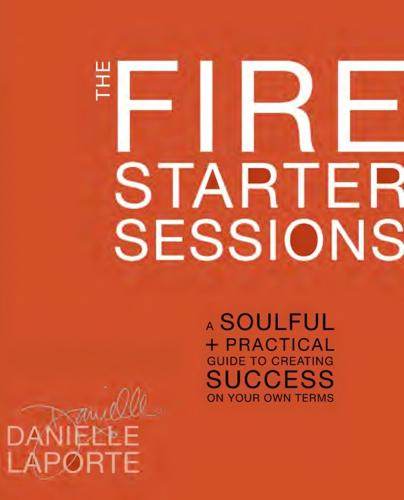
The Fire Starter Sessions: A Soulful + Practical Guide to Creating Success on Your Own Terms
by
Danielle Laporte
Published 16 Apr 2012
Cheap easy can’t see that some losses are gains. Cheap easy stays in a stifling relationship because it seems easier than facing the heartbreak and dividing up the furniture. Cheap easy is frequently in a rush, a smidge desperate, and usually scrambling for options. Cheap easy tells little white lies to get things done. The path of least resistance isn’t about shortcuts, cutting corners, or being clever. And it’s certainly not about making mediocrity acceptable. It’s about optimizing the truth. It’s about casting your seeds on the most fertile soil for your best chances for success. START WITH THE EASY STUFF Easy is sublimely logical.
…
FEELINGS + TIME MANAGEMENT If you have goal lists or vision boards, write your desired feelings on them—front and center. Stick a note of your key feelings into your daily planner. I have a sticky note inside my Moleskine planner that says CONNECTED. AFFLUENT. DIVINELY FEMININE. INNOVATIVE. And that teeny note, those few words, are the rudder of my ship. David Allen, the king of prioritization and time management, gives the most refreshing answer to the question “How do you set priorities?” “I have a radical point of view: Learn to listen to, and trust, your heart. Or your intuition, or your gut, or the seat of your pants, or whatever part of your anatomy is the source of that mysteriously wonderful ‘still, small voice’ that somehow knows you better than you do, and knows what’s better for you, better than you do.”
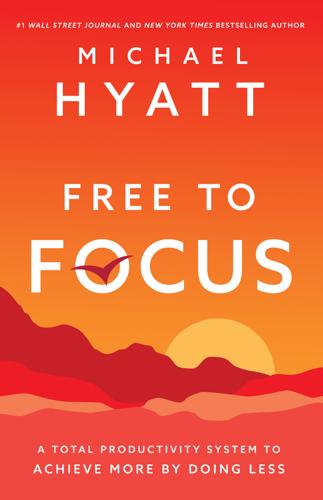
Free to Focus: A Total Productivity System to Achieve More by Doing Less
by
Michael Hyatt
Published 8 Apr 2019
We must: Sleep Eat Move Connect Play Reflect Unplug Let’s start by looking at the first. Practice 1: Sleep Eulogizing one of his top executives, former Disney CEO Michael Eisner said, “Sleep was one of [his] enemies. [He] thought it kept him from performing flat out 100 percent of the time. There was always one more meeting he wanted to have. Sleep, he thought, kept him from getting things done.”6 We all buy into that myth at times, but it’s nothing to celebrate. We convince ourselves we can squeeze one more meeting or task into the day if we get up earlier or go down later. It’s pervasive. On average Americans get just under seven hours of sleep each night.7 And that number, already below the recommended eight, is probably overstated because people usually report the time they spend in bed, not the hours they actually sleep.
…
Clayton breaks it down to two key findings. First, he explains that “exercise reduces stress, and lower stress makes the time spent in either realm more productive and enjoyable.” Second, he notes that exercise creates a greater sense of self-efficacy, the confidence we have in our ability to get things done. Simply put, exercise lowers our stress and makes us feel strong, creating a sense that we can conquer the world. That mindset has a huge impact on how we approach both our home and work responsibilities.27 It carries over into how you approach work, engage with clients and competitors, and view your ability to crush big goals.
…
That’s part of why we keep doing it, but the feeling of speed is deceptive. Naish cites research that shows multitaskers indeed work faster—but they also produce less.10 According to NYU professor Clay Shirky, multitasking “provides emotional gratification” because it “moves the pleasure of procrastination inside the period of work.”11 We feel like we’re getting things done when we’re really dragging them out. If we’re drafting an email but then pause to check Twitter, then pull up a newsfeed, then go refill our coffee, and then return to our desk to finish, we’ve interrupted the thinking necessary to finish the email. It will take us longer to reenter the headspace required to complete the original task.
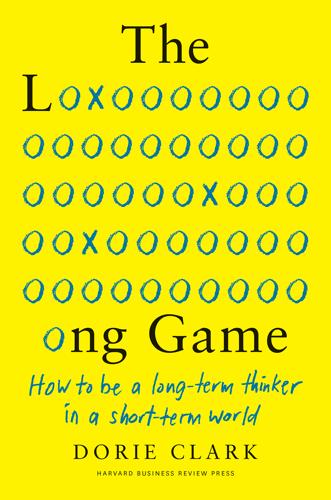
Long Game: How Long-Term Thinker Shorthb
by
Dorie Clark
Published 14 Oct 2021
That’s both internal strength, because we have to face down uncomfortable questions about who we are and what we really want, and external strength, because we have to deal with bosses and colleagues and clients who are still used to measuring productivity through face time and volume. We have to be willing to make choices. And at a very basic level, we have to believe change is possible in the first place. Years ago, I got to know David Allen, author of the famed productivity guide Getting Things Done. When I interviewed him for my book Stand Out, he shared an interesting insight. “You don’t need time to have a good idea,” he told me. “You need space. And you can’t think appropriately if you don’t have space in your head. It takes zero time to have an innovative idea or to make a decision, but if you don’t have psychic space, those things are not necessarily impossible, but they’re suboptimal.”
…
See also networks and networking connectors, 150–151 content creation, 103–105, 118–119 gaining recognition through, 125 leveraging, 126–127 Corcoran, Marlena, 83–84 CORE Leadership Program, 63 costs opportunity, 45–46 physical/emotional, 46–47 Covid-19 pandemic, 3–5, 87 creating, 103–105 Crenshaw, Dave, 27–29, 197–198 culture going against the prevailing, 29 on our calling, 56 curiosity, 210 customer service, 40–41 Cutruzzula, Kara, 103–104 Davies, Ali, 24 deadlines, 88–89, 187–188 deception phase of exponential growth, 166–167 delayed gratification, 193–196 Deloitte, 63 Del Val, Dayna, 181–184 Design the Life You Love workshop, 110–111 Diamandis, Peter, 165–166 DiBernardo, Albert, 106, 200–201 Dierickx, Constance, 60–61 Dijksterhuis, Ap, 117–118 distance to empty, 197–199 diversity, long- vs. short-term thinking about, 6–7 documentary filmmaking, 57–58 Do It for Yourself (Cutruzzula), 104 dorieclark.com, 221 Drucker, Peter, 110, 117 Edison, Thomas, 181 Edmondson, Amy, 119 Edwards, Sue, 57–58 email, 21–22 emotional costs, 46–47 The E-Myth Revisited (Gerber), 102 e-newsletters, 220–221 Entrepreneurial You (Clark), 5, 99, 147, 220 entrepreneurship, learning, 101–103 Etsy, 62 execution mode, 3 hidden benefits of, 22–25 expectations, 168–169 experimentation, 15 20% time for, 14, 74–78 failure and, 180–181 expertise, recognition for, 125–127 exploration, 73–93 20% time for, 14, 74–78 carving out time for, 82–85 life portfolios and, 78–80 of New York City, 73–74, 81–82 realizing dreams through, 85–92 exponential growth, 165–167 exponential technologies, 165–166 failure, 9, 15 extreme goals and, 173–179 finding alternatives and, 184–187 involving your community and, 188–190 looking foolish and, 66–67 minimum benefit and, 90 multiple paths and, 181–184 resilience and, 211 rethinking, 173–190 family, 47–48 leveraging for, 120 meaning-based goals and, 55–56 prioritizing, 27–28 saying no and, 39, 46 Feingold, Sarah, 61–62 Fernandez, Jenny, 139–140, 149 Ferrazzi, Keith, 102 Ferriss, Tim, 23 focus, 14–15, 53 deciding what to be bad at and, 39–41 heads-up/heads-down strategy for, 99–100 on money, 55 strategic leverage and, 112, 115–128 thinking in waves and, 95–113 time for exploring, 73–93 Fogg, BJ, 195 FOMO (fear of missing out), 34, 47–48 Forbes, 97–98 Fowlds, Samantha, 205–206 Freestyle Love Supreme Academy, 65–66 Frei, Frances, 40–41 Friedman, Stew, 119 Fun Home (musical), 74 gatekeepers, 161–162 Gautam, Tanvi, 138–139 Gerber, Michael, 102 Germanotta, Stefani, 192 Getting Things Done (Allen), 29–30 Gino, Francesca, 133–134, 149 Give and Take (Grant), 141 Gmail, 75 goals, 14–15, 53 20% time and, 82–85 based on the kind of person you want to be, 65–67 coaches for, 86–88 deadlines for, 88–89 deciding what to be bad at and, 39–41 dreams and, 85–92 evaluating opportunities based on, 38–39 evaluating what you’re doing now and, 59–61 exploring, 92 extreme, 67–72, 173–179 failure and, 173–179 forgetting what others think and, 63–65 getting support for, 86 leveraging for professional, 122–123 optimizing for interesting, 14, 56–59 perseverance and, 157 planning around your priorities and, 27–30 remembering why you started and, 61–63 setting, 55–72 strategic overindexing and, 96–98 time frames for, 90–92 tracking data on, 115–116 Godin, Seth, 171 Goldsmith, Marshall, 109–112, 117 Good Morning America (TV show), 145–146 Good to Great (Collins), 102 Google, 159 20% time at, 14, 74–78 News, 75 X, 76–78 Granovetter, Mark, 132 Grant, Adam, 141 gratification, short-term vs. long-term, 13, 193–196 Gulati, Daniel, 147 Guthier, Christina, 122–123 habits, tiny, 195 Hagel, John, 34 Hall, Jeffrey, 132 Hamilton (musical), 65–66 Harry Potter (Rowling), 161 Harvard Business Review, 97–98, 137, 159 heads-up/heads-down strategy, 99–100 hedonic adaptation, 160 “Hell yeah or no” strategy, 35–37 Hersey, Paul, 109–110 Hesselbein, Frances, 110 Hill, Napoleon, 184 Horn, Sam, 187, 188 Incontrera, Marie, 70–71 information asking for, to evaluate opportunities, 42–44 attention to, 25 hoarding, 12 networking and, 107–108 innovation exponential growth and, 165–166 feature, 7 life portfolios in, 78–80 making time for, 14 space for, 29–30 interest optimizing for, 14, 56–59 setting goals based on, 59–61 time for exploring, 73–78 introverts, 107–108 jazz album, 146–149 Joel, Mitch, 144–145 Johnson, Rukiya, 55–56 Kalin, Rob, 62 KashKlik, 142–143 Kaur, Manbir, 46–47 Kim, W.

The Best Interface Is No Interface: The Simple Path to Brilliant Technology (Voices That Matter)
by
Golden Krishna
Published 10 Feb 2015
When Twitter’s powerful tools allowed an increasing number of third-party services to elegantly extend Twitter’s platform, for example—enabling people to consume and share Twitter content more easily—analysts reacted with concern. From Wells Fargo to BTIG, investment arms expressed caution because a quicker route to getting things done allowed 14 percent of Twitter’s user base to avoid strategic ad placement.10 When companies place most of their profit eggs in one basket, metrics-driven results around ads can become more influential than the basics of good design. “My feed is cluttered.” This is the first sentence of a 2013 Facebook researcher’s Facebook post about her team’s news feed findings.11 The stream of thoughts, images, videos, and links your friends and advertisers share with you is at the core of the Facebook experience and can even alter your mood.12 According to her team’s research, the resounding feedback from people using their web service was that important and interesting content was buried in a cluttered feed of stories they were less interested in reading.
…
In Toronto, McKechnie introduced unique training programs for each player’s one-of-a-kind physiology based on the data, so that they can play more minutes and stay healthier longer. Programs that are adapted to individuals—an idea that dropped injury rates in Toronto so low that they were the least injured team in the 2013–14 NBA season. Everyone reading this book is different. You have your favorite way of getting things done. Your own approach to things. And a world of NoUI can embrace that reality. We can transform your primary experiences with computers from reactive interfaces to proactive solutions. The Challenges 16. Change: You hate this book? Thank you. A lot of people won’t like this book. I don’t blame them.
…
But having explicit controls sitting in the background of a complex system that you can directly manipulate is one way of easing any potential user fear and creating a relationship of trust. The graphical user interface in this case is not the experience; it’s just there for advanced privacy settings. Look, we’re not going to sit around and spend hours reading through legal documents we don’t understand. It’s first-world torture. We’re eager to get things done and live our lives. But privacy is really important, and when taking technology to the next step we should consider good methods for providing the kind of control—automatic or manual—that lets everyone keep their secrets safe while enjoying the elegance of a system that provides you with what you need.
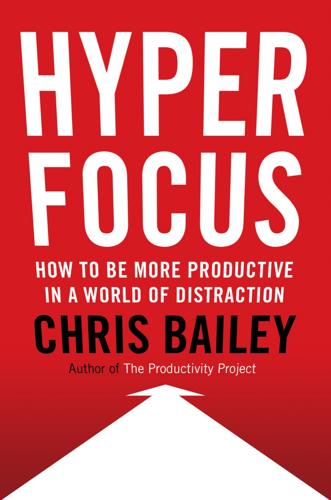
Hyperfocus: How to Be More Productive in a World of Distraction
by
Chris Bailey
Published 31 Jul 2018
When writing a report, we remember we had a meeting that started ten minutes ago; when we arrive home from work, we realize we forgot to stop to pick up bread. Clearing our head of these “open loops” is critical so they don’t distract us in the moment as we’re trying to focus. It’s impossible to write about focus and productivity without citing David Allen’s work. Allen is the author of Getting Things Done, a book with a simple premise: that our brain is for having ideas, not for holding them. An empty brain is a productive brain, and the more stuff we get out of our heads, the more clearly we think. You’re already familiar with this idea if you keep a calendar. You’d never be able to think clearly if you tried to keep track of all of your appointments and meetings in your head.
…
When you hyperfocus, you’re surrounded by very few novel objects of attention, and what you’re doing fills your attentional space quite naturally. This same idea holds true at home, and we experience the same benefits of hyperfocus there. We remember more of what we’re doing, and our experiences become more meaningful as a result. We spend more time in the moment and get things done more quickly and with less effort. I like to do this by setting three personal daily intentions in addition to my three work goals, even if one happens to be binge-watching a show on Netflix. One area I’ve noticed that particularly benefits from hyperfocus is conversations. The secret to deep, meaningful conversations is simple: bring your complete attention to the person you’re speaking with.
…
They successfully hire highly skilled people, but ones who are doing the job only for a paycheck. Frequent recharging may also be necessary if you find you aren’t motivated by a particular project, or by your work in general. The more you need to regulate your behavior—to resist distractions and temptations or push yourself to get things done—the more often you’ll need to recharge. (This is why deadlines can be so useful: they force you to focus on something.) Focus becomes effortless when you’re working on a task that’s intrinsically motivating—all the productivity advice in the world won’t help if you can’t stand your job.* Research on the value of breaks points to two simple rules: Take a break at least every ninety minutes.
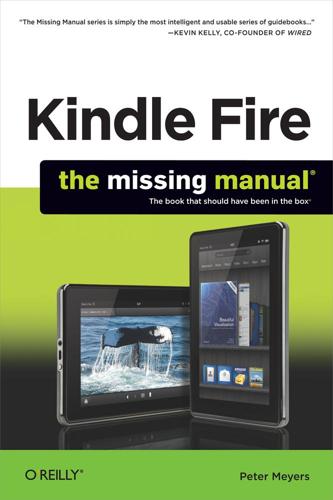
Kindle Fire: The Missing Manual
by
Peter Meyers
Published 9 Feb 2012
But when you are hooked up, the changes made in either direction (from Web to Fire, or vice versa) happen instantaneously. Reminders even work when the Fire is asleep. You get lotsa ways to speedily enter appointments and tasks, and a nice search tool for hunting down when you did what. To-Do Lists and Notes “Getting things done” is a mantra for many people today. Whether you follow the rigid methodology of a professional task-slaying guru (like David Allen, the brains behind the so-called GTD movement) or just want a way to digitally jot down your lists, these apps will help you stay on track. ColorNote Notepad Notes (free). The only thing overdone in this app is its repetitively redundant name.

Moral Ambition: Stop Wasting Your Talent and Start Making a Difference
by
Bregman, Rutger
Published 9 Mar 2025
Read it, then go out and change the world’ Hannah Ritchie, bestselling author of Not the End of the World ‘This is one of very few books in my life that has changed how I view the world (and my world, too!). It is a true bible of realistic idealism. It takes awareness of “getting things done” to a new level, with a dynamic invitation to up each of our games. This is a must read’ David Allen, bestselling author of Getting Things Done ‘Do you want to read a book about the most important decisions of your life? Rutger Bregman has produced that book and you should read it’ Tyler Cowen ‘A fierce and brilliant call to arms for anyone who has been wondering whether there’s more to life.
…
While the abolitionist movement in France was led by writers and intellectuals (and didn’t get much done), the British movement was powered by merchants and businessmen. 4 Pragmatic revolutionaries can make all the difference – something you also see reflected in Ralph Nader’s next career moves and the cult he founded in the 1960s. After his victory over General Motors, Nader continued to work as a one-man crusader, a ‘self-appointed lobbyist for the public interest’.24 During those years, he learned his first big lessons about how to get things done: 1 Most reporters are lazy and don’t investigate things for themselves. You get press coverage by handing them ready-made scoops, preferably along with telephone numbers for your sources. 2 Don’t bother contacting members of Congress directly because politicians are chronically short on time.
…
And that doesn’t help anyone. Plus there’s another, more essential reason to rein in your moral ambition. When all you see is gross injustice and drowning toddlers, try to justify ‘wasting’ time or money on art or music, love or friendship. Then the good you do is never good enough. But people are more than tools for getting things done. We’re worthwhile in our own right. In one of his acclaimed essays, George Orwell wrote about the life of Mahatma Gandhi, a man remembered to this day as a saint. ‘I’ve never been able to feel much liking for Gandhi,’ wrote Orwell.11 There was something exasperating, even unbearable, about India’s celebrated fighter for freedom.
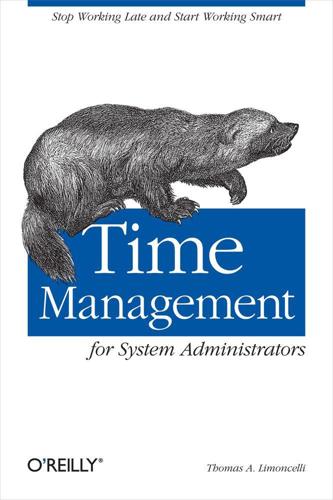
Time Management for System Administrators
by
Thomas A.Limoncelli
Published 1 Jan 2005
Fourth, you might consider reading some traditional time management books, ones not written for system administrators in particular. This book focuses on the things specific to the system administration lifestyle and leaves a lot of general topics to the other books that cover them very well. I recommend Getting Things Done by David Allen (http://www.davidco.com). What to Do with All Your "New" Free Time? The techniques in this book may save you hours, if not days, each week. If you save a little more than an hour per day, you can get the same amount of work done in a four-day workweek . So, what will you do with all this free time ?
…
For people who habitually say, "Just one sec, I almost have this fixed," time management can be a challenge. A second common trait I've noticed in myself and in my colleagues is a genuine desire to help people, to support them in the use of an unfriendly or unforgiving technology, and to make things work so other people can get things done. This trait is definitely commendable, but if it gets noticed that you can and are able to help, others will ask you for it more and more. The universe gravitates toward clue, so the end result is a life I usually describe as "one big tech support call." When my grandmother was still alive, I would visit her in Florida periodically.
…
I've met people who say they work better with a lot of distractions, like having a TV or radio playing in the background. When we're younger and don't care as much about discipline, having a lot of distractions doesn't seem like as much of a problem. We also have fewer responsibilities and deadlines, plus less pressure to get things done. As we get older our needs change, and the environment we're comfortable working in changes, too. Try decluttering your work environment for one week and see if it helps. It may jolt you out of habits developed when you were, essentially, a different person. Multitasking System administration is a job where multitasking is the norm.
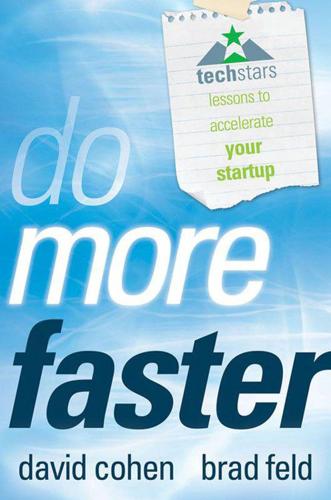
Do More Faster: TechStars Lessons to Accelerate Your Startup
by
Brad Feld
and
David Cohen
Published 18 Oct 2010
Reject and remove this excuse from your vocabulary because e-mail volume is no reason to suck at e-mail. In fact, entrepreneurs should want even more e-mail, especially from your customers. If you accept the notion that “you can't get too much e-mail,” you'll then need a system for dealing with it. We recommend something similar to the Getting Things Done (GTD) system by David Allen, which includes tactics such as “inbox zero.” Your goal should be to touch every e-mail only once and either respond to it immediately or put it on a to-do list with a due date to be dealt with later. Then, delete the item from your inbox. Do not use your inbox as your to-do list—this is a guaranteed path to e-mail misery.
…
Virtually all large companies have people with titles like “Vice President of Corporate Development” or “Senior Vice President of Business Development.” In many cases, the actual role is “Vice President of Not Corporate Development” or “Senior Vice President of Keeping Entrepreneurs Away From the People in BigCo that Actually Get Things Done.” These people are often fun to hang out with, charming, and will fill you full of hope and excitement. But they rarely can get something done with a startup unless someone on the product and sales side of BigCo demands it. As Michael says, Beware. Throw Things Away Eric Marcoullier Eric is the co-founder and CEO of OneTrueFan.

Pivot: The Only Move That Matters Is Your Next One
by
Jenny Blake
Published 14 Jul 2016
Just for kicks, brainstorm three avenues you could pursue within each, no matter how far-fetched: Expert as teacher: Teaching large groups of people, either in person or through online channels. For example: creating software tutorials or teaching guitar by posting videos on YouTube or online course platforms. Coach or consultant: You or a team you teach use your expertise to guide others. For example: running time management workshops like David Allen, creator of the classic productivity system Getting Things Done, or working as a professional organizer like Marie Kondo, author of the runaway hit The Life-Changing Magic of Tidying Up. Subject matter expert (SME): Sharing ideas, solutions, and best practices on what you know about a specific area; forecasting or interpreting trends in your industry; disseminating knowledge and projections beyond the classroom.
…
Jennifer Grayeb suggests that individuals ask their managers about their personal career journey, and the choices they had to make along the way. She also says one of the biggest lessons for younger impacters is balancing their desire for stretch projects and meaningful work with rolling up their sleeves and getting things done. If impacters want to create a growth culture, they should also take the lead in helping others. “For every opportunity you get, help open a door for someone else.” Laura Grose, HR business partner at one of Silicon Valley’s fastest-growing start-ups, advocates that impacters keep a realistic and patient view of what roles may be available.
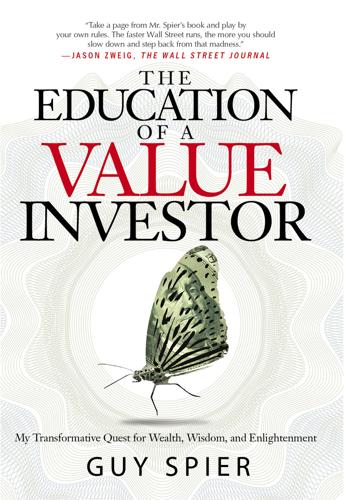
The Education of a Value Investor: My Transformative Quest for Wealth, Wisdom, and Enlightenment
by
Guy Spier
Published 8 Sep 2014
Ramachandran and Sandra Blakeslee Signs of Life: How Complexity Pervades Biology by Ricard Solé and Brian Goodwin Synaptic Self: How Our Brains Become Who We Are by Joseph LeDoux Self-help A Message to Garcia by Elbert Hubbard A Simple Act of Gratitude: How Learning to Say Thank You Changed My Life by John Kralik Acres of Diamonds by Russell Conwell As a Man Thinketh by James Allen Daring Greatly: How the Courage to Be Vulnerable Transforms the Way We Live, Love, Parent, and Lead by Brené Brown Focusing by Eugene Gendlin Getting the Love You Want: A Guide for Couples by Harville Hendrix Getting Things Done: The Art of Stress-Free Productivity by David Allen How to Win Friends and Influence People by Dale Carnegie How Will You Measure Your Life? by Clayton Christensen, James Allworth, and Karen Dillon Keeping the Love You Find: A Personal Guide by Harville Hendrix Manifest Your Destiny: The Nine Spiritual Principles for Getting Everything You Want by Wayne Dyer Success: Advice for Achieving Your Goals from Remarkably Accomplished People by Jena Pincott Thanks!
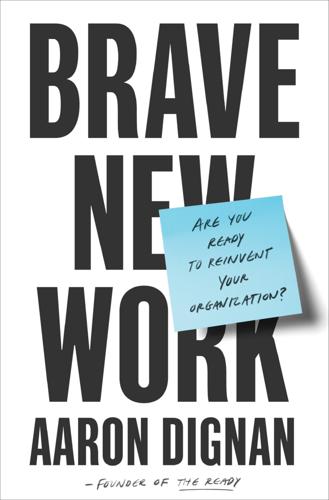
Brave New Work: Are You Ready to Reinvent Your Organization?
by
Aaron Dignan
Published 1 Feb 2019
He claims every organization has three structures: The first is the formal structure, the realm of hierarchy, which exists purely for compliance with the law. The firm must be owned, operated, and accountable, whether it’s a corporation or a cooperative. The second is the informal structure, the realm of influence. This is the social network that exists behind the org chart, always present and often leveraged to get things done behind the scenes. And finally, the value-creation structure, the realm of reputation. This is perhaps the least well understood, because most firms confuse their formal structure with the way they create value. When we talk about organizing and teaming in new ways, about the inner workings of Evolutionary Organizations, it is their value-creation structure that we’re talking about.
…
Organizations aren’t just overloaded; they’re addicted. No daylight exists on their calendars, just back-to-back meetings as far as the eye can see. Their every need—for information, for decisions, for feedback—seems to call for a meeting. They hate them, but they can’t quit, because there’s no other way to get things done. Salesforce executive Vala Afshar masterfully highlighted the irony of our meeting culture when he tweeted, “You likely have to get management approval for a $500 expense . . . but you can call a 1 hour meeting with 20 people and no one notices.” Meanwhile, new tools have emerged that allow the more technologically savvy among us to communicate and coordinate across space and time.
…
So if you know of, or participate in an Evolutionary Organization, I invite you to visit BraveNewWork.com and share your story with the rest of us. Evolutionary Organizations AES Askinosie Chocolate Automattic Basecamp Black Lives Matter Blinkist Bridgewater Buffer Burning Man Buurtzorg BvdV charity: water Crisp David Allen Company dm-drogerie markt elbdudler Endenburg Elektrotechniek Enspiral Equinor Evangelical School Berlin Centre Everlane FAVI Gini GitLab Gumroad Haier Handelsbanken Haufe-umantis Heiligenfeld Hengeler Mueller Herman Miller HolacracyOne Ian Martin Group / Fitzii Incentro John Lewis Joint Special Operations Command Kickstarter Lumiar Schools Medium Menlo Innovations Mondragon Morning Star Nearsoft Netflix Nucor Orpheus Chamber Orchestra Patagonia Phelps Agency Pixar Premium-Cola Promon Group Red Hat School in the Cloud Schuberg Philis Semco Group Spotify stok Sun Hydraulics Treehouse USS Santa Fe Valve Whole Foods W.
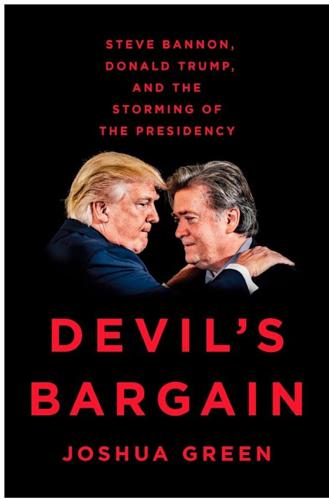
Devil's Bargain: Steve Bannon, Donald Trump, and the Storming of the Presidency
by
Joshua Green
Published 17 Jul 2017
The most exclusive among them—a rotating cast of Bannon, Conway, Spicer, and Priebus, along with Trump’s spokeswoman Hope Hicks, his running mate Mike Pence, and assorted Trump offspring and their spouses—squeezed into a ten-by-fifteen-foot storage room built from makeshift drywall partitions. Bossie dubbed it “the crack den.” Its walls were plastered with bumper stickers and posters bearing chest-thumping declarations of purpose (“DONALD TRUMP: HE WILL GET THINGS DONE”), along with, incongruously, a painting of a teddy bear and a blue butterfly smiling at a potted sunflower. Bill Stepien, a hard-bitten former top aide to New Jersey governor Chris Christie who was Trump’s national field director, set up a projection TV that beamed an electoral map from his laptop onto a wall.
…
He invariably chose a seat in the back of the classroom, among a group of friends who sneered at the grasping, overeager “tire biters” in the front row. He felt comfortable doing this not only because it was entirely in his nature, but also because he felt increasingly sure of his academic primacy. “In my view, Steve was certainly top three in intellectual horsepower in our class—perhaps the smartest,” recalled David Allen, who sat with him in the back of the class. “But he combined horsepower with logical, well-structured arguments. Whenever Steve spoke, my advice was to ‘listen for understanding.’” When he returned to Richmond over the Christmas holiday, Bannon mailed out dozens of letters requesting interviews for summer associateships.
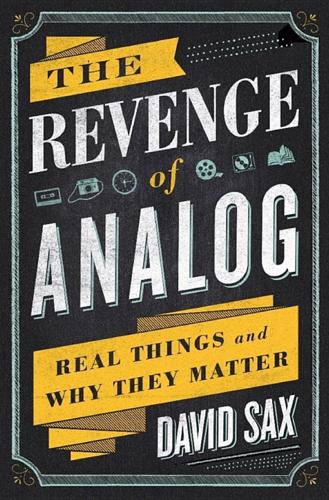
The Revenge of Analog: Real Things and Why They Matter
by
David Sax
Published 8 Nov 2016
Followers of David Allen’s popular time-management method, Getting Things Done (which began as a best-selling book in 2002 and was branded a “New Cult for the Info Age” by Wired), adopted the Moleskine notebook as their preferred tool, transforming an object designed for romantic, creative scribbling into a hammer of productivity with charts, lists, and bullet points. The Moleskine had no special features to invite this, aside from its simple design. It just happened to be the perfect blank slate for Getting Things Done devotees to hack for their purposes, a true tabula rasa. “Getting Things Done isn’t a paper-dependent method,” Allen told me last year.
…
A pen and paper requires no power source, no boot-up time, no program-specific formatting, no syncing to external drives and the cloud. “You can waste time with all kinds of stuff,” Allen said, “but the digital world provides a lot of opportunity to waste a lot of time.” And wasted time was the stated enemy of Getting Things Done. In his book The Organized Mind, cognitive psychologist and neuroscientist Daniel Levitin talks about the tremendous harm inflicted on us by information overload, which he claims is worse for your brain than exhaustion and smoking marijuana (he calls multitasking “empty-calories brain candy”).
…
The final factor that unleashed millions of Moleskine notebooks on the world (close to 20 million last year, actually) was the convergence of these productivity users and the Internet. Around 2002, blogs dedicated to Moleskine notebooks sprang up, including Moleskinerie (a visual gallery of Moleskines filled with beautiful drawings), Getting Things Done, student blogs from computer science classes at MIT, and Mike Rohde’s sketchnote community. Rohde, a web designer, cracked open his first Moleskine notebook in 2007, at a conference in Chicago. “The physical book provided me with limitations, and that pushed me to be creative,” said Rohde, who usually took verbatim notes on a laptop.

Super Thinking: The Big Book of Mental Models
by
Gabriel Weinberg
and
Lauren McCann
Published 17 Jun 2019
Once you can correctly categorize activities as important and not important, you have another problem: for most people there is never enough time to work on the many important activities they’ve categorized. How do you choose what to do? This section’s theme is succinctly summarized by a quote from a Fast Company interview with productivity consultant David Allen, author of Getting Things Done: “You can do anything, but not everything.” You must pick between the important activities in front of you, or else you will find yourself multitasking and lacking time for deep work. Allen also notes that “there is always more to do than there is time to do it, especially in an environment of so much possibility.
…
Grouping offshore as the commandos do their work is the second wave of soldiers, the infantry. These are the people who hit the beach en masse and slog out the early victory, building on the start given them by the commandos. . . . Because there are so many more of these soldiers and their duties are so varied, they require an infrastructure of rules and procedures for getting things done—all the stuff that commandos hate. . . . What happens then is that the commandos and the infantry head off in the direction of Berlin or Baghdad, advancing into new territories, performing their same jobs again and again, though each time in a slightly different way. But there is still a need for a military presence in the territory they leave behind, which they have liberated.
…
When they leave, they take with them some of the organization’s institutional knowledge, the collective knowledge shared by the entire institution. Your best people know how to be effective within your organization. They know the organizational history, who to go to for different pieces of knowledge, and ultimately how to get things done. When these people leave, their institutional knowledge walks out the door with them, and the whole organization becomes less effective. For example, Lauren continued to get questions about her projects at GlaxoSmithKline long after she left her position, even after one of the drugs she worked on had been purchased by another corporation.
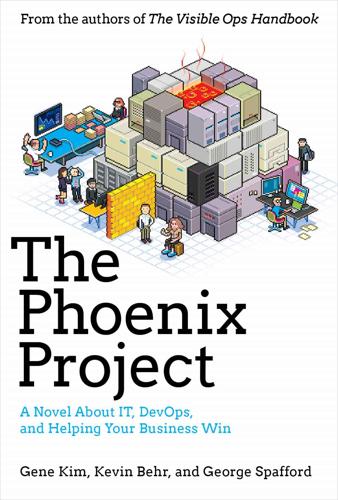
The Phoenix Project: A Novel About IT, DevOps, and Helping Your Business Win
by
Gene Kim
,
Kevin Behr
and
George Spafford
Published 14 Jul 2013
I then try to explain the thought process of how we can determine which projects we can safely release, based on whether they have any dependencies on Brent. “Wait a second. Bill of resources and routings?” Wes says, suddenly looking very dubious. “Bill, I don’t need to remind you that we’re not running a factory here. This is IT work. We use our brains to get things done, not our hands. I know Erik has said a couple of smart things here and there, but come on… This sounds like some sort of consultant parlor trick.” “Look, I’m having trouble getting my head around this, too,” I say. “But can you really say that the conclusions we’re making based on his thinking are wrong?
…
Among others, they helped crystallize the practices that became The Three Ways that Erik talked about. I want to acknowledge John Allspaw, Paul Hammond, and Jez Humble for their groundbreaking and seminal contributions of showing how fast flow in the IT value stream is really done. And thank you to all the other reviewers who helped shape the manuscript: David Allen, David Bills, Kip Boyle, Shane Carlson, Carlos Casanova, Scott Crawford, Iris Culpepper, Mike Dahn, Chris Eng, Paul Farrall, Daniel Francisco, Kevin Hood, Matt Hooper, Tom Howarth, Kevin Kenan, Paul Love, Norman Marks, Tom McAndrew, Ally Miller, David Mortman, Wendy Nather, Michael Nygard, John Pierce, Dennis Ravenelle, Sasha Romanosky, Susan Ryan, Fred Scholl, Lawrence “Butch” Sheets, Bill Shinn, Adam Shostack, Dan Swanson, Joe “Feech” Telafici, Jan Vromant, and Lenny Zeltser.
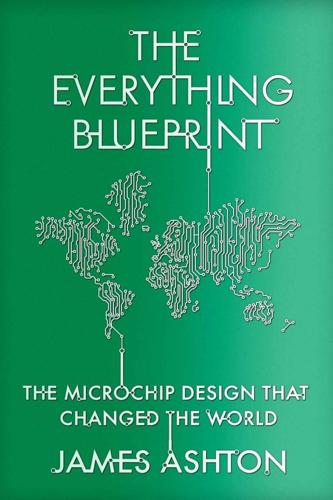
The Everything Blueprint: The Microchip Design That Changed the World
by
James Ashton
Published 11 May 2023
Still, this accommodation could have been seen as a sign of thawing relations between the two battling superpowers. But anyone who thought so was severely mistaken. China on the Offensive Over several decades spent working in the microchip industry, Charles Kao had earned a reputation for getting things done. Slight and unassuming, with dark hair, a high forehead and typically dressed in an anonymous grey business suit, Kao specialised in the cut-throat world of memory chips, where plunging prices, multiplying capability and tight margins were a fact of life. When the Formosa Group, one of Taiwan’s foremost conglomerates, wanted to get into this market in 1994, Kao, a veteran of Intel and TSMC, was called in to help make it happen.
…
The Computer Literacy Project (CLP) had its roots in the BBC’s Continuing Education Television Department, which championed adult self-improvement. Several popular documentaries had aired on the subject, but executives thought there was more to do. Leaning on the expertise of several government departments, the BBC despatched two journalists, David Allen and Robert Albury. Their fact-finding mission to France, Holland, Germany, Sweden, Norway, Japan and the US, funded by the Manpower Services Commission, a public body with a remit to co-ordinate UK employment and training, yielded a three-part TV series, The Silicon Factor, and ‘Microelectronics’, a neatly typed, 50-page document published in December 1979 and dropped onto the desks of every UK Member of Parliament the following summer.
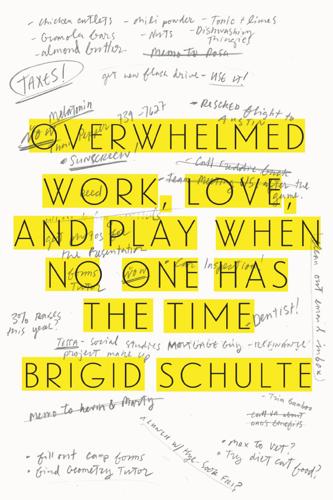
Overwhelmed: Work, Love, and Play When No One Has the Time
by
Brigid Schulte
Published 11 Mar 2014
Not only that, when the group all gave the wrong answer, the perceptual circuits in the subject’s brain lit up—not the forebrain that deals with conscious decision making and monitoring conflicts. So strong was the urge to conform, Berns concluded, that the brain actually changed what the subject saw.8 “As a culture, we have translated speed into being a virtue. If you are busy, if you get things done quickly, if you move quickly throughout the day, it expresses success. You’re achieving,” Rodriguez said. “We’re validated by those around us living the same way and sanctioned if we aren’t following this cultural expectation. The feeling is, if I’m not busy today, something’s wrong.” * * * Everywhere, even in rural America it seems, people strive to be busy.9 They tell pollsters they’re too busy to register to vote.10 To look busy and important—or because they can’t help themselves—people obsessively check their smartphones every ten minutes.11 In surveys, people say they’re too busy to make friends outside the office,12 too busy to date,13 too busy to sleep, and too busy to have sex.14 Eight in ten Britons report being too busy to eat dessert, even though four in ten say dessert is better than sex.15 We’re in such a rush that the typical sound bite for a presidential candidate has been compressed from forty seconds in 1968 to 7.3 seconds in 2000.16 Remember those unused vacation days?
…
Ericsson studied young violinists at the prestigious Academy of Music in Berlin to see what it takes to be the best. Ericsson is widely credited for coming up with the theory that it takes ten thousand hours of deliberate practice in anything to become an expert. “That led to the assumption that the best way to get things done is to just work more hours,” Schwartz said. But that’s only part of it. Ericsson’s study found that not only did the best violinists practice more, they also practiced more deliberately: They practiced first thing in the morning, when they were freshest, they practiced intensely without interruption in typically no more than ninety-minute increments for no more than four hours a day.
…
His surveys have discovered that two-thirds of workers feel they don’t have enough time to get all their work done and 94 percent have at some point felt “overwhelmed by information to the point of incapacitation.”21 Trying to even decide what to pay attention to in all that noise, writes time management guru David Allen, not only taxes the brain but also wears down the willpower and leads to “decision fatigue.” We can’t decide what to think about, worrying about home stuff at work and work stuff at home, “so then we walk around with what I call the GSA of life—the Gnawing Sense of Anxiety that something out there might be more important than what you’re currently doing,” he told The Atlantic.
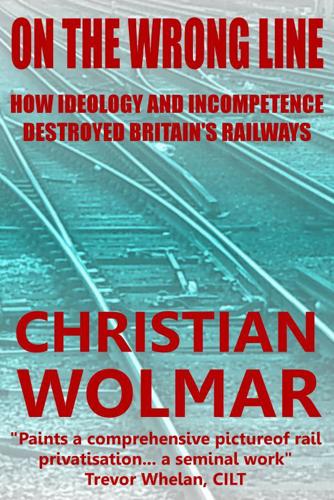
On the Wrong Line: How Ideology and Incompetence Wrecked Britain's Railways
by
Christian Wolmar
Published 29 May 2005
Roger Freeman, the junior transport minister, talked of having privatised rail companies operating by 1994. In the event, the first privatised train ran two years later than that, but such wishful thinking demonstrated just how little ministers and their officials understood about the complexities of the railway industry. Moreover, the necessity to get things done quickly meant there was constant pressure to make decisions when there was insufficient knowledge on which to base them. This haste was to colour the whole process and allow a deeply flawed model to be implemented, even though, as the process unfolded, many Tories realised that it was by no means an ideal solution.
…
He calculated that by the time they could reasonably have realised that the train was heading for disaster, they had between 7.35 and 9.25 seconds in which to send the vital message to Hodder to stop the train, which might have reduced the speed of the accident or even prevented it altogether. Instead, the signaller in charge, David Allen, decided to ‘monitor’ what happened, only taking action at the very last moment. The issue is confused by the fact that the various signallers in the control centre at the time gave misleading accounts of their actions, which Cullen does not entirely trust. Cullen, however, does not blame the individual signallers for their actions but rather the way in which they were managed and trained.
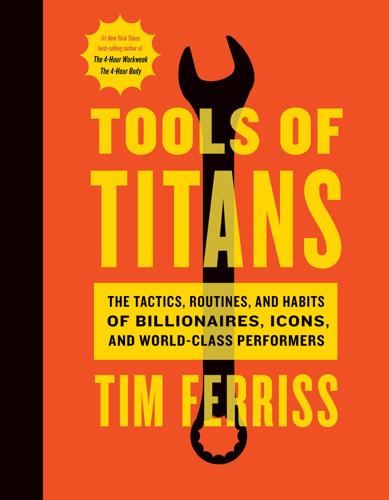
Tools of Titans: The Tactics, Routines, and Habits of Billionaires, Icons, and World-Class Performers
by
Timothy Ferriss
Published 6 Dec 2016
(Budd Schulberg), The Artist’s Way Morning Pages Journal (Julia Cameron), The War of Art (Steven Pressfield) Libin, Phil: The Clock of the Long Now (Stewart Brand), The Alliance (Reid Hoffman), The Selfish Gene (Richard Dawkins), A Guide to the Good Life (William Irvine) MacAskill, Will: Reasons and Persons (Derek Parfit), Mindfulness: An Eight-Week Plan for Finding Peace in a Frantic World (Mark Williams and Danny Penman), The Power of Persuasion (Robert Levine), Superintelligence: Paths, Dangers, Strategies (Nick Bostrom) MacKenzie, Brian: Tao Te Ching (Lao Tzu), Way of the Peaceful Warrior (Dan Millman) McCarthy, Nicholas: The Life and Loves of a He Devil: A Memoir (Graham Norton), I Put a Spell on You: The Autobiography of Nina Simone (Nina Simone) McChrystal, Stanley: Once an Eagle (Anton Myrer), The Road to Character (David Brooks) McCullough, Michael: The Start-up of You: Adapt to the Future, Invest in Yourself, and Transform Your Career (Reid Hoffman and Ben Casnocha), Getting Things Done: The Art of Stress-Free Productivity (David Allen), The 7 Habits of Highly Effective People: Powerful Lessons in Personal Change (Stephen R. Covey), The Checklist Manifesto (Atul Gawande) McGonigal, Jane: Finite and Infinite Games (James Carse), Suffering Is Optional (Cheri Huber), The Willpower Instinct (Kelly McGonigal), The Grasshopper: Games, Life, and Utopia (Bernard Suits) Miller, BJ: Any picture book of Mark Rothko art.
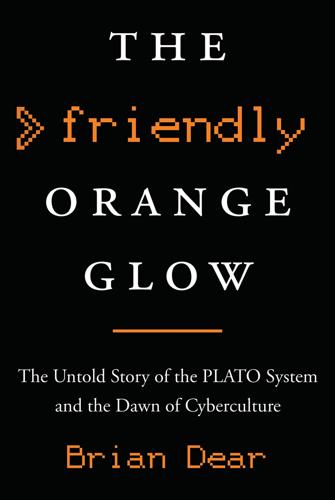
The Friendly Orange Glow: The Untold Story of the PLATO System and the Dawn of Cyberculture
by
Brian Dear
Published 14 Jun 2017
” — Back in India, Bitzer found a high-frequency oscilloscope stored away in the electrical engineering department head’s office. Two undergraduate IIT students, Brij Arora and Suhas S. Patil, were working on a project at the time and needed that oscilloscope to test their circuits. Bitzer, adept at ways of bypassing bureaucracy so people could stay productive and get things done, showed the two students a way to get access to it. Arora impressed Bitzer and he began attending some of his lectures and discussions on how to use computers and what makes them tick. But he also gave lectures on other things of interest to him, especially his pet project, the plasma panel. “Is it possible to make a flat panel display out of this stuff?”
…
Thanks to everyone who agreed to meet in person, invariably extending their hospitality, kindness, and support, sometimes for many long hours of conversation; as well as to the many people who spoke via phone, sometimes for many hours; as well as to the many people who wrote and sent me long personal essays, or sent photographs, news clippings, and documents; as well as to the thousands of people who corresponded by email—sometimes over many years. Thanks to Mike Achenbach; Sam Adams; Alix (Gaby) Albert; Kathryn (Lutz) Alesandrini; Paul Alfille; Chris Alix; Mary Allan; Jim Allard; Brock Allen; David Allen; Michael Allen; Daniel Alpert; Mitch Altman; Ernest Anastasio; David Andersen; John Anderson; Richard C. Anderson; Thomas H. Anderson; Marc Andreessen; Tanner Andrews; Amotz Anner; Andy Anthony; Andrew Appel; Don Appleman; Jeffrey Armstrong; Brij Arora; Eric Artman; Bruce Artwick; Neil Ashby; Isaac Asimov; Tom Ask; Chip Aspnes; Richard Atkinson; M.